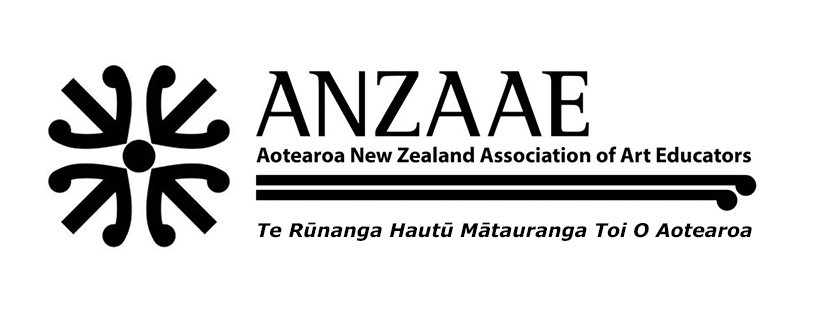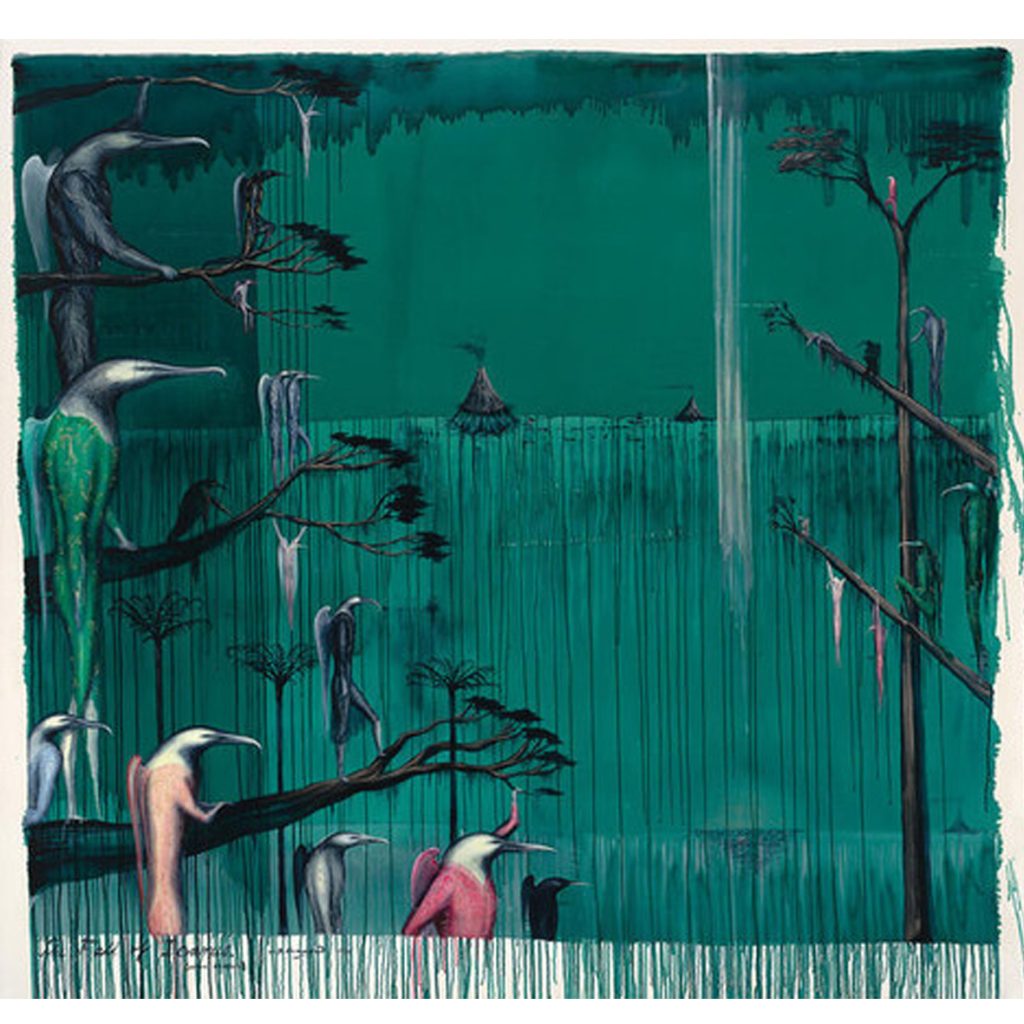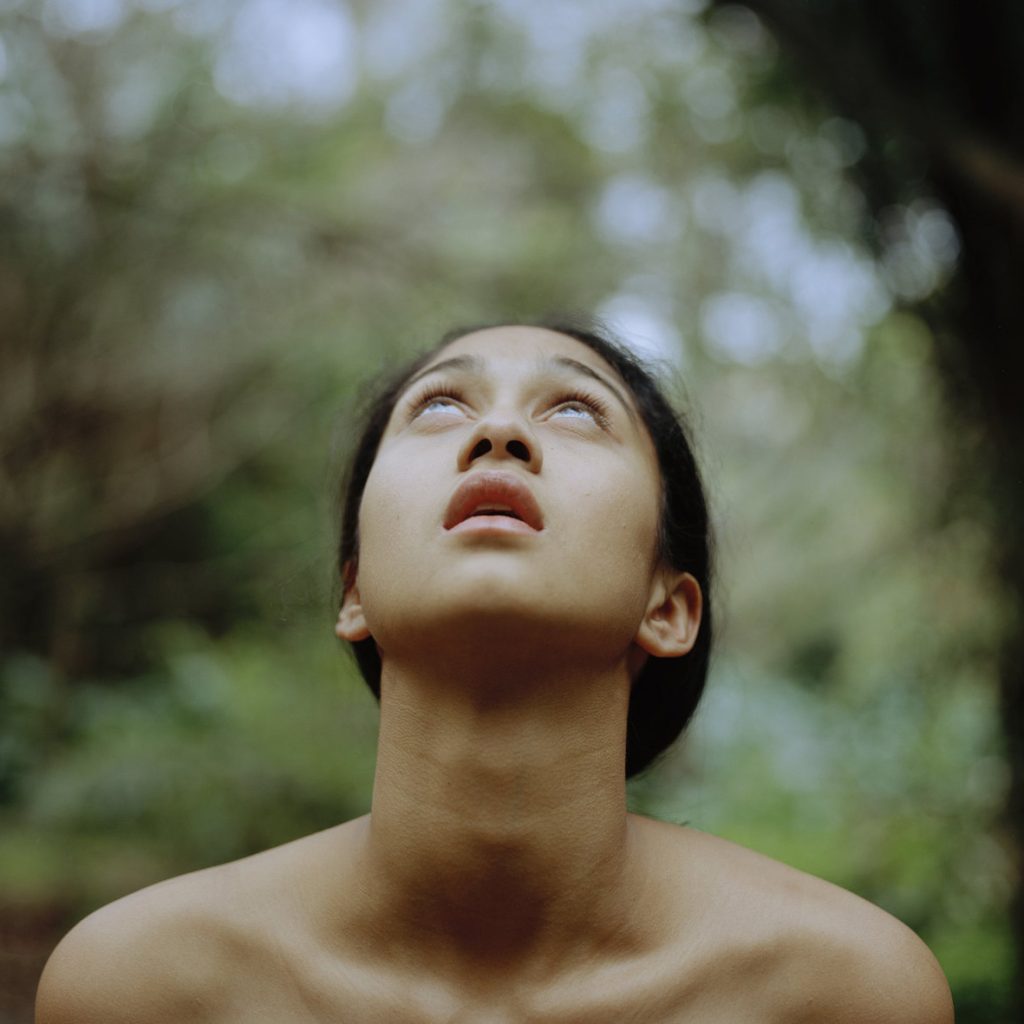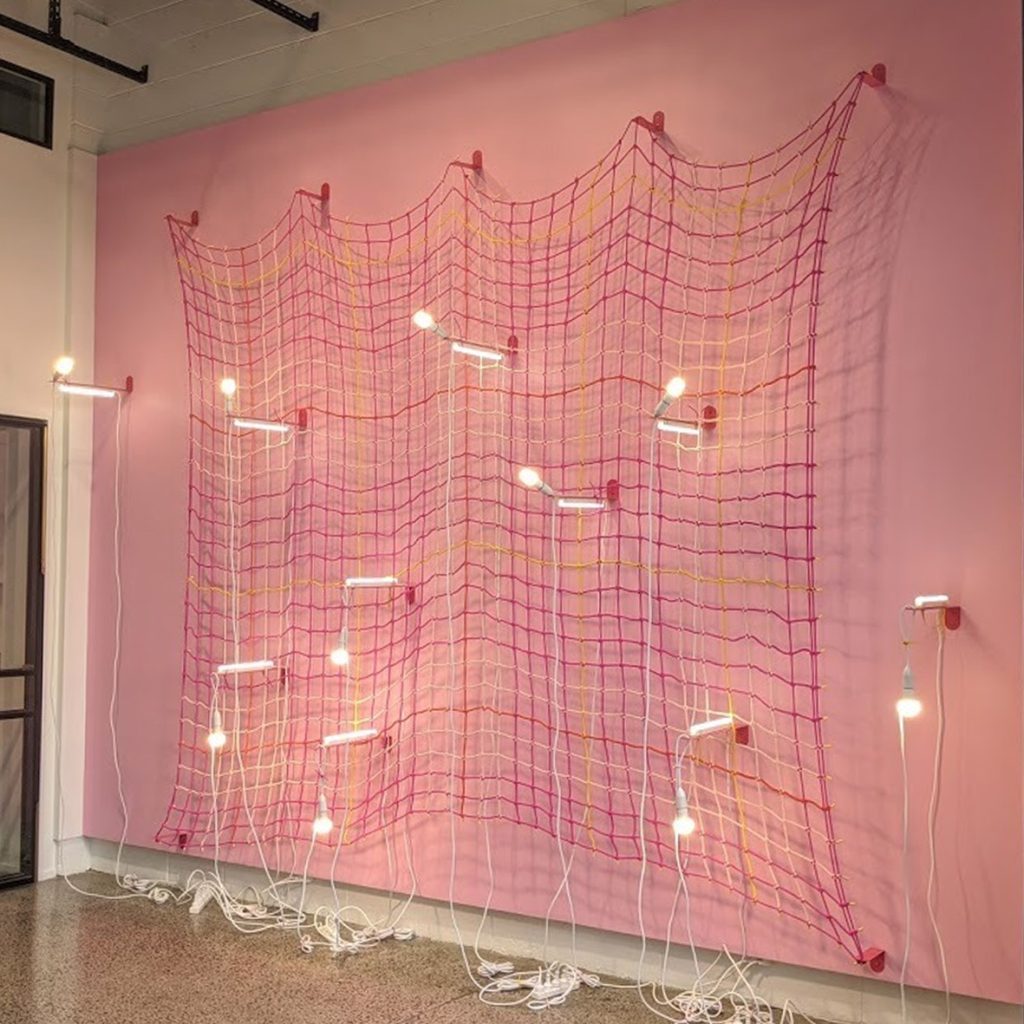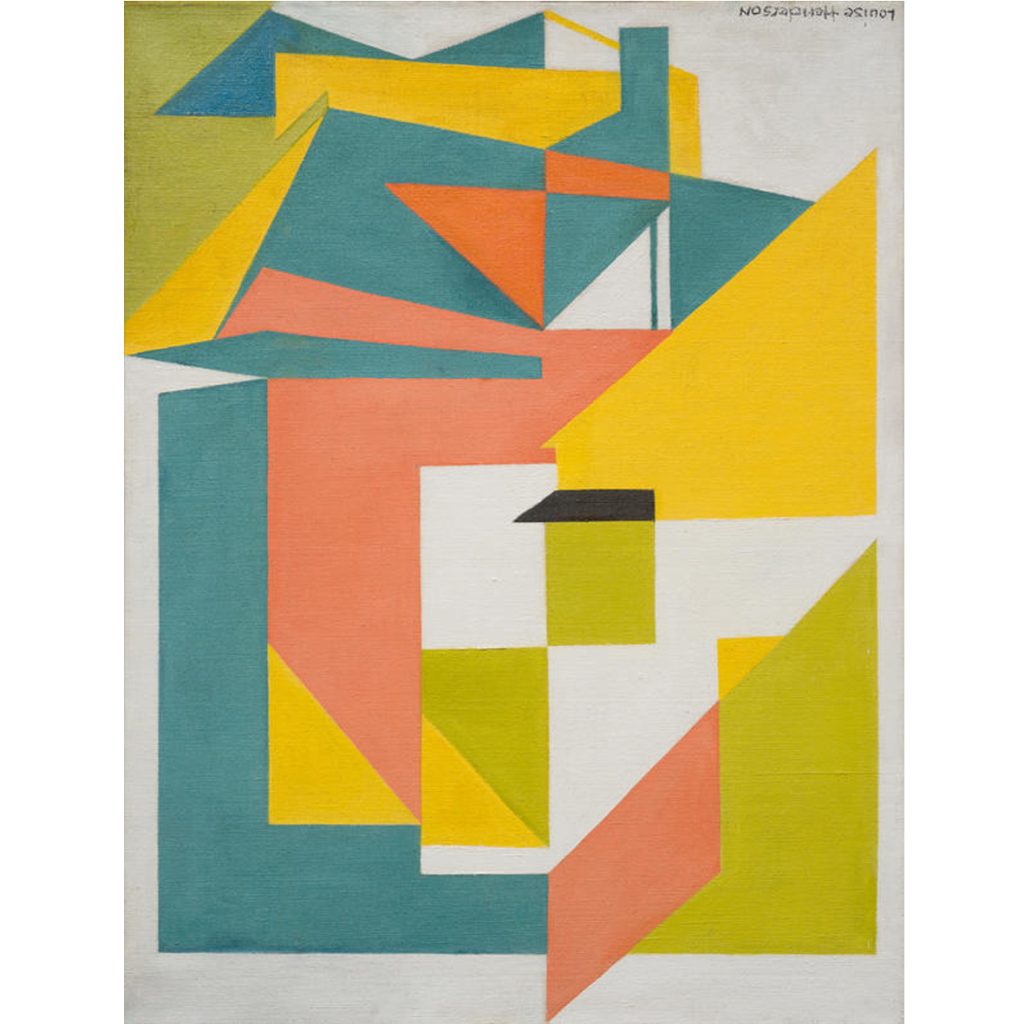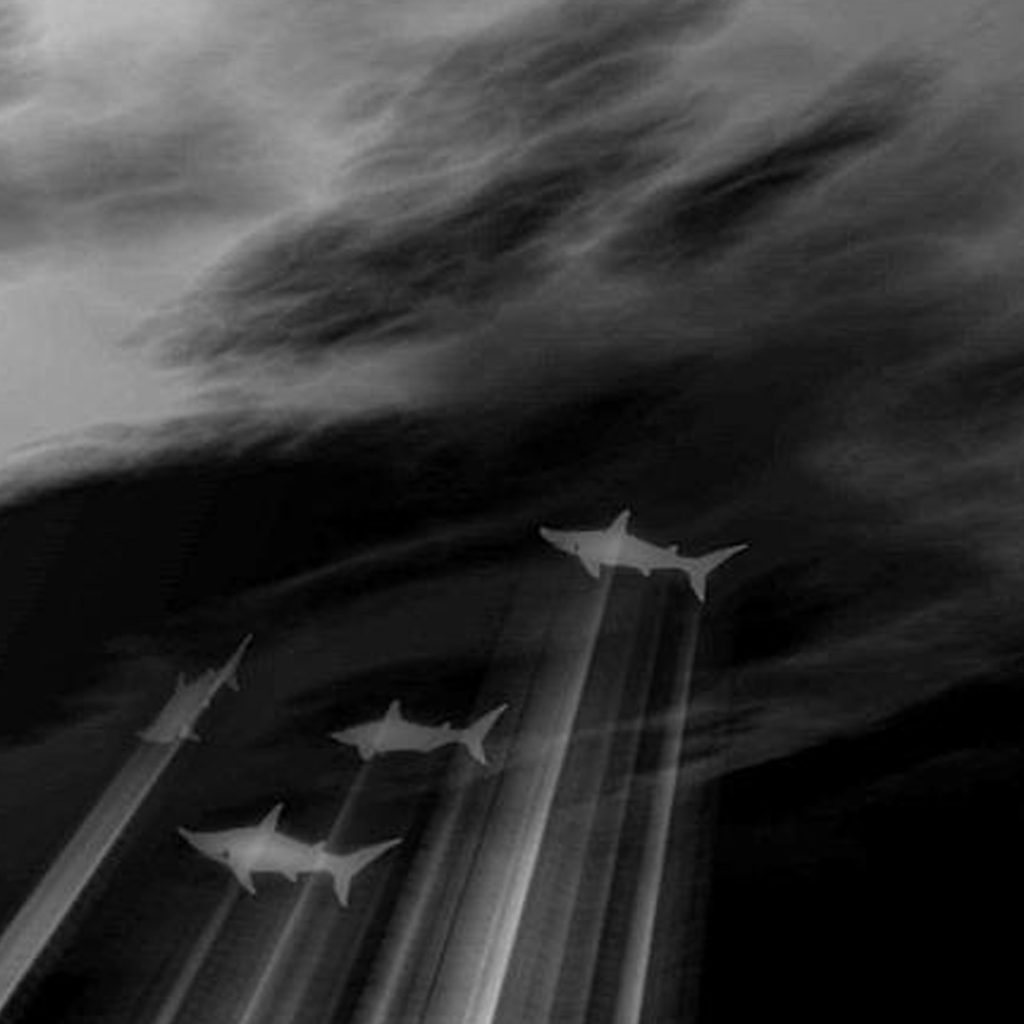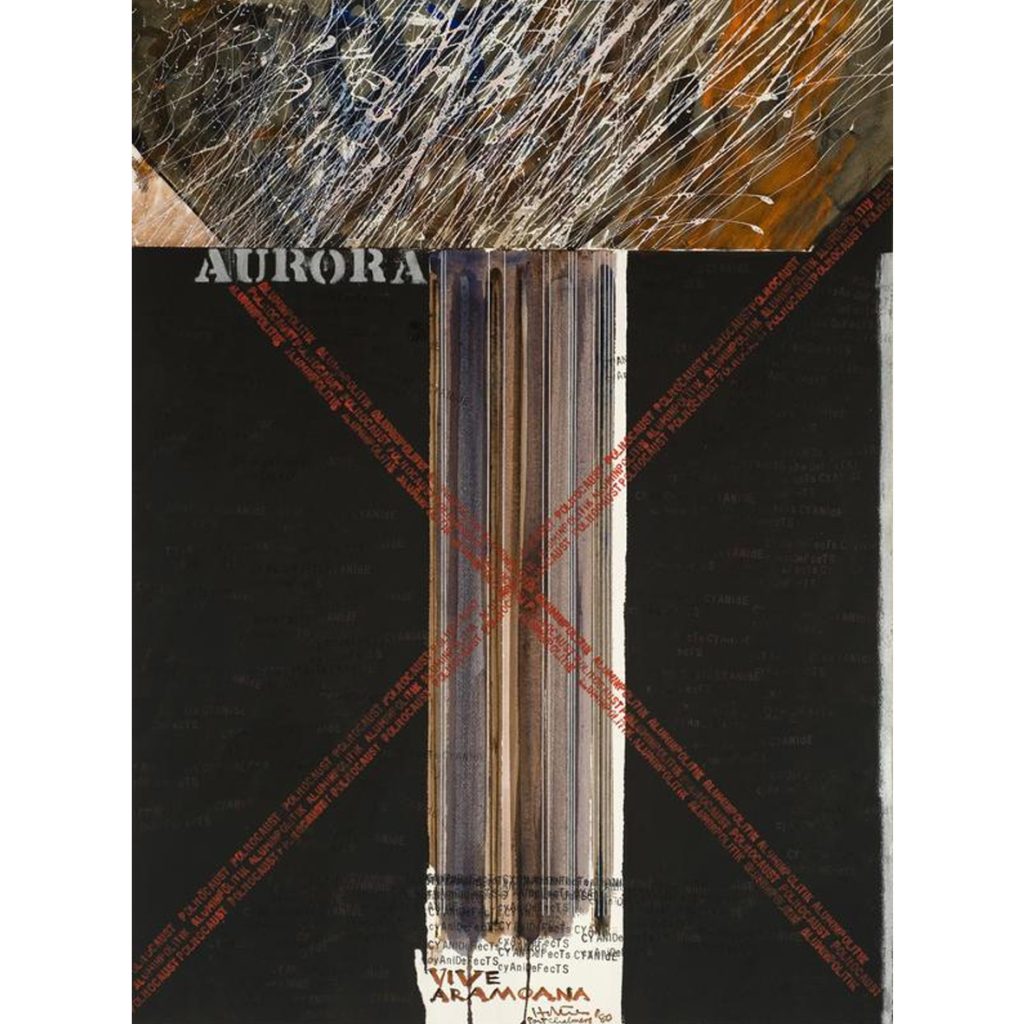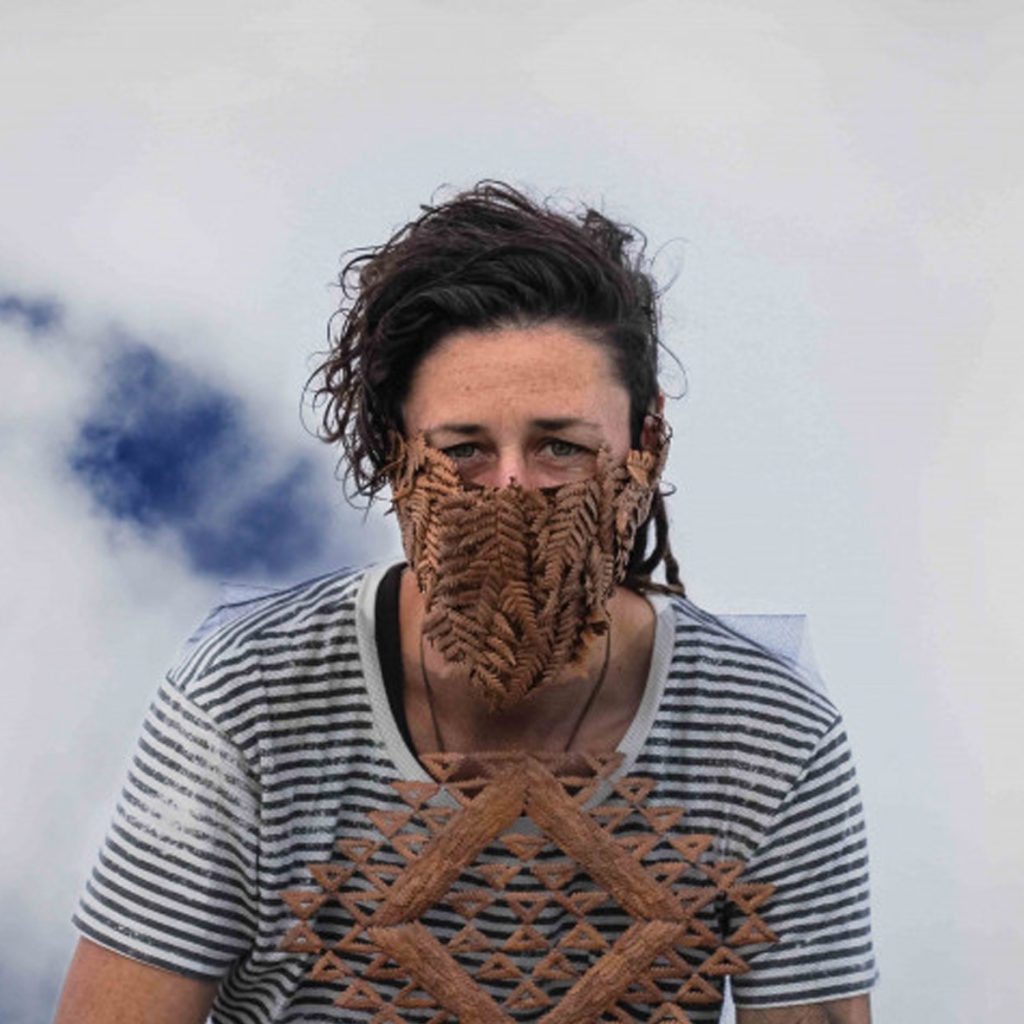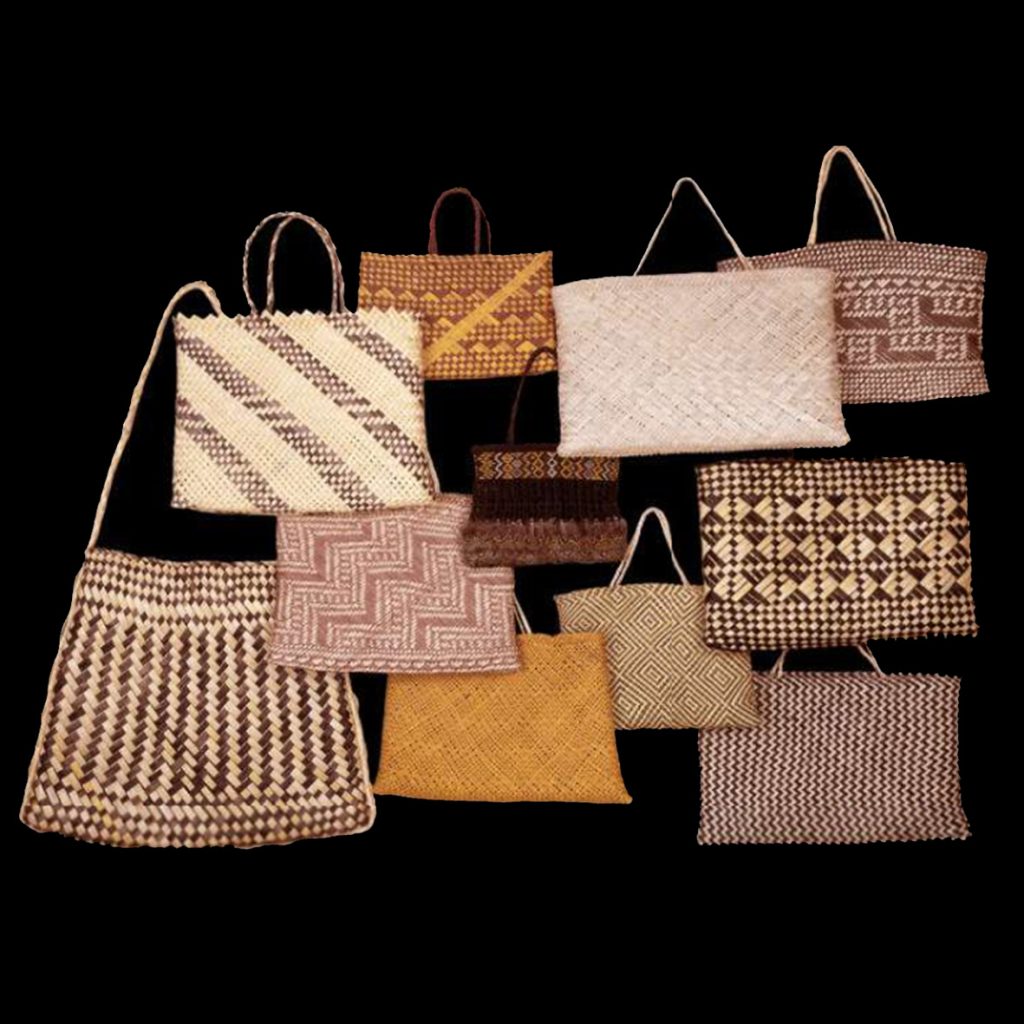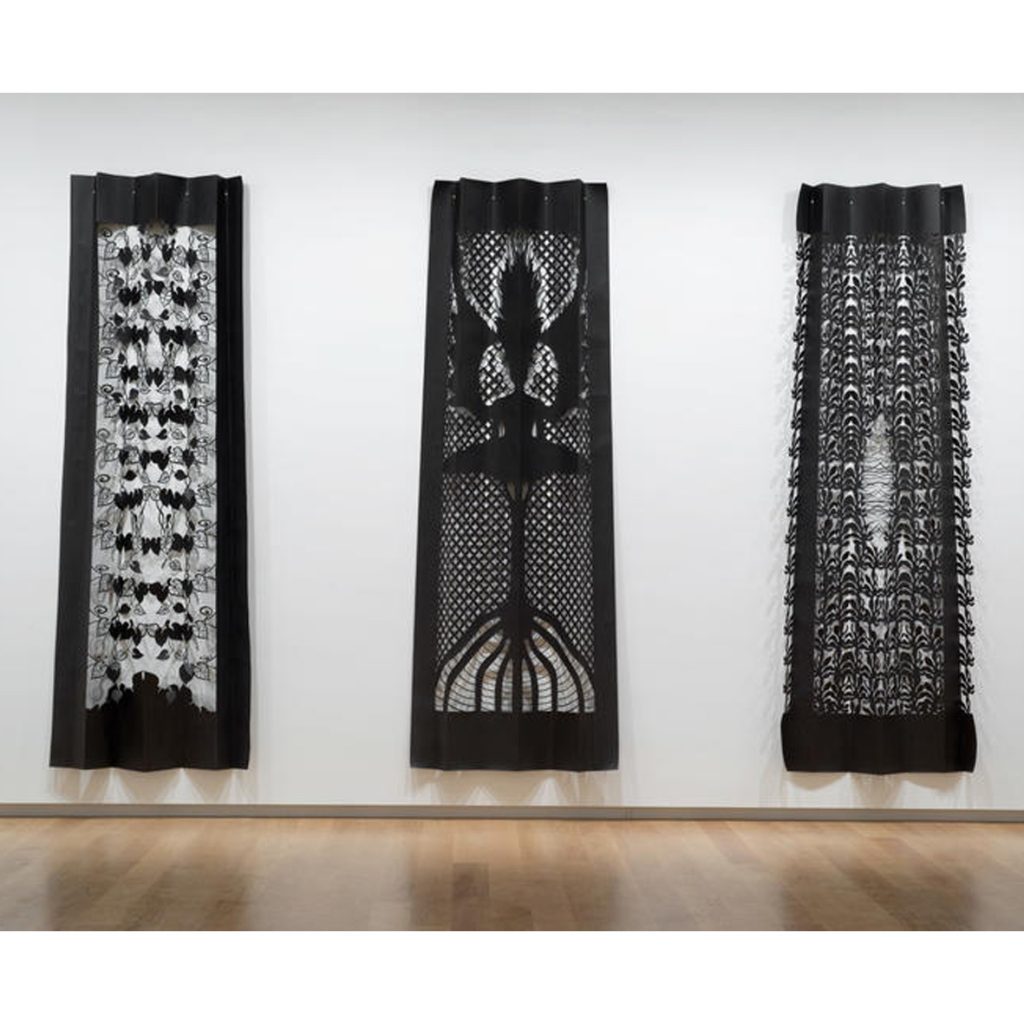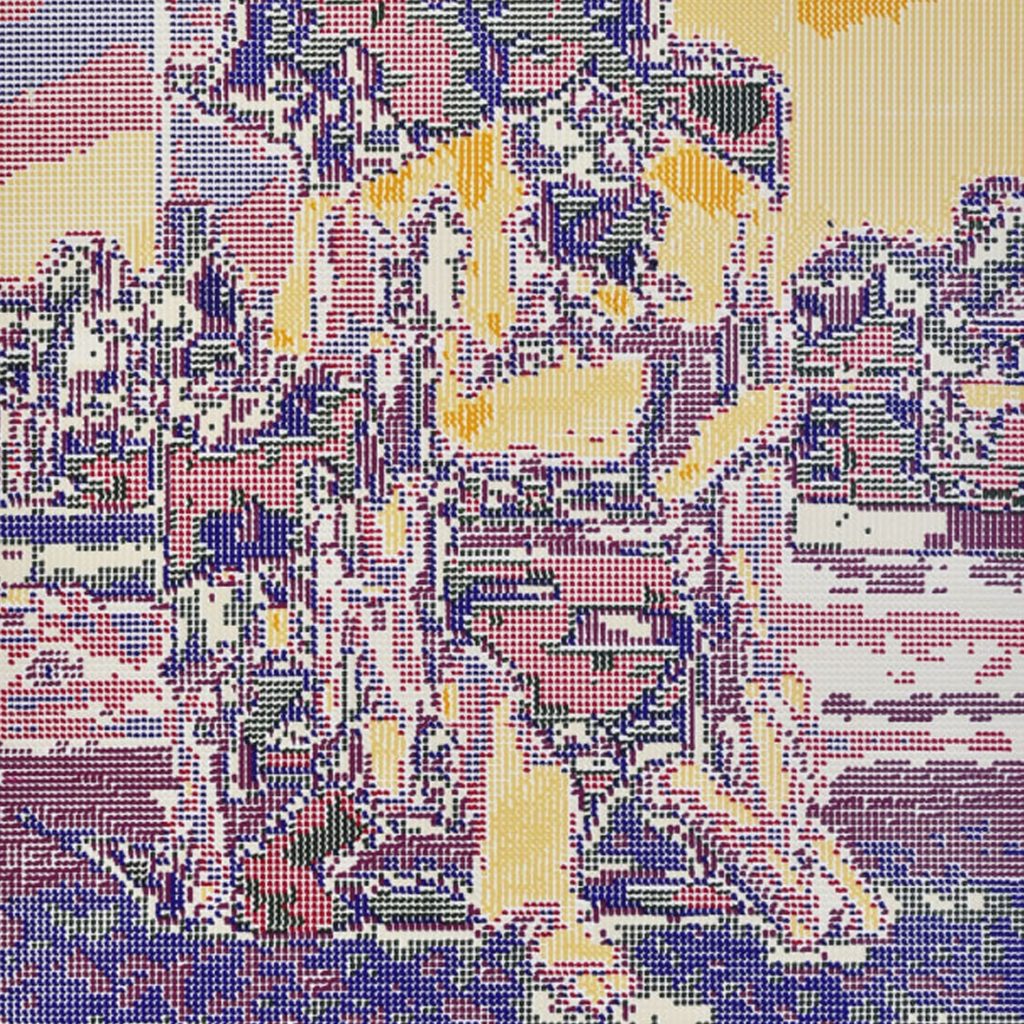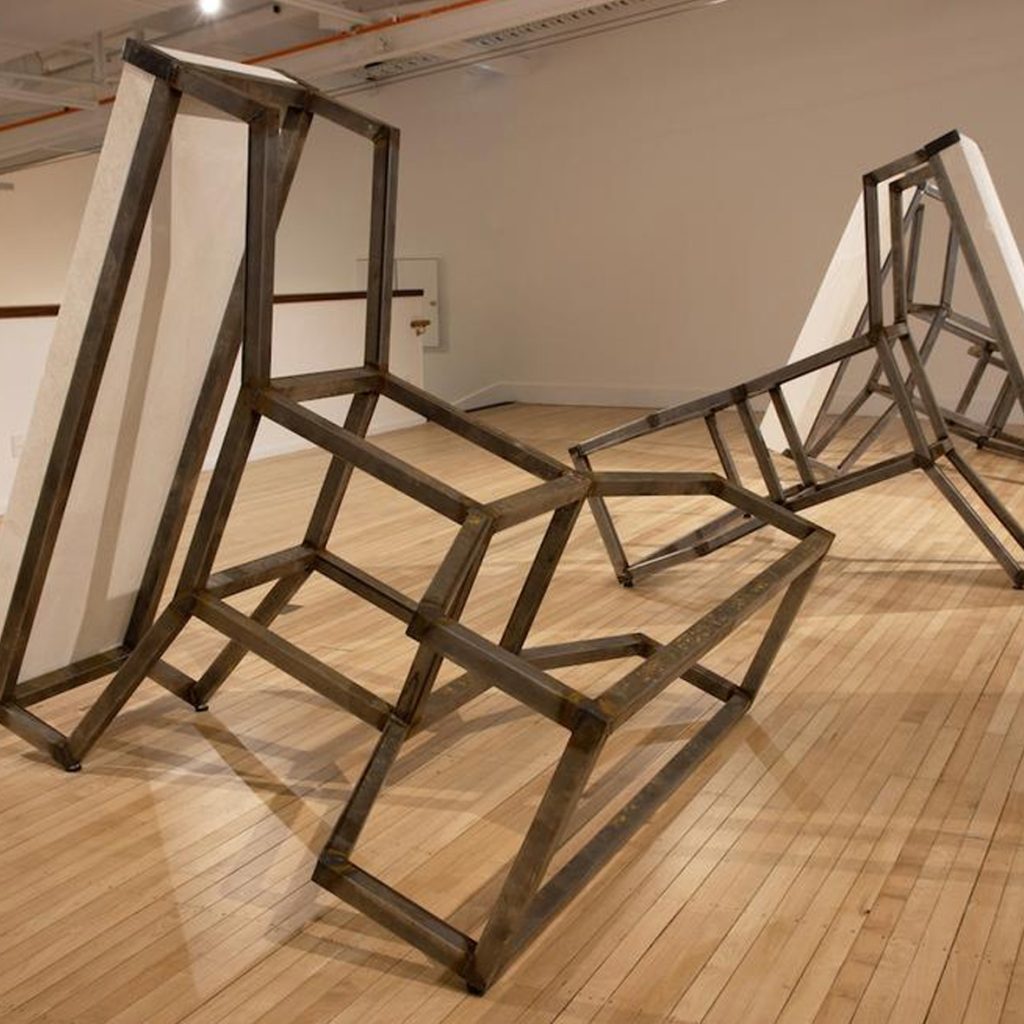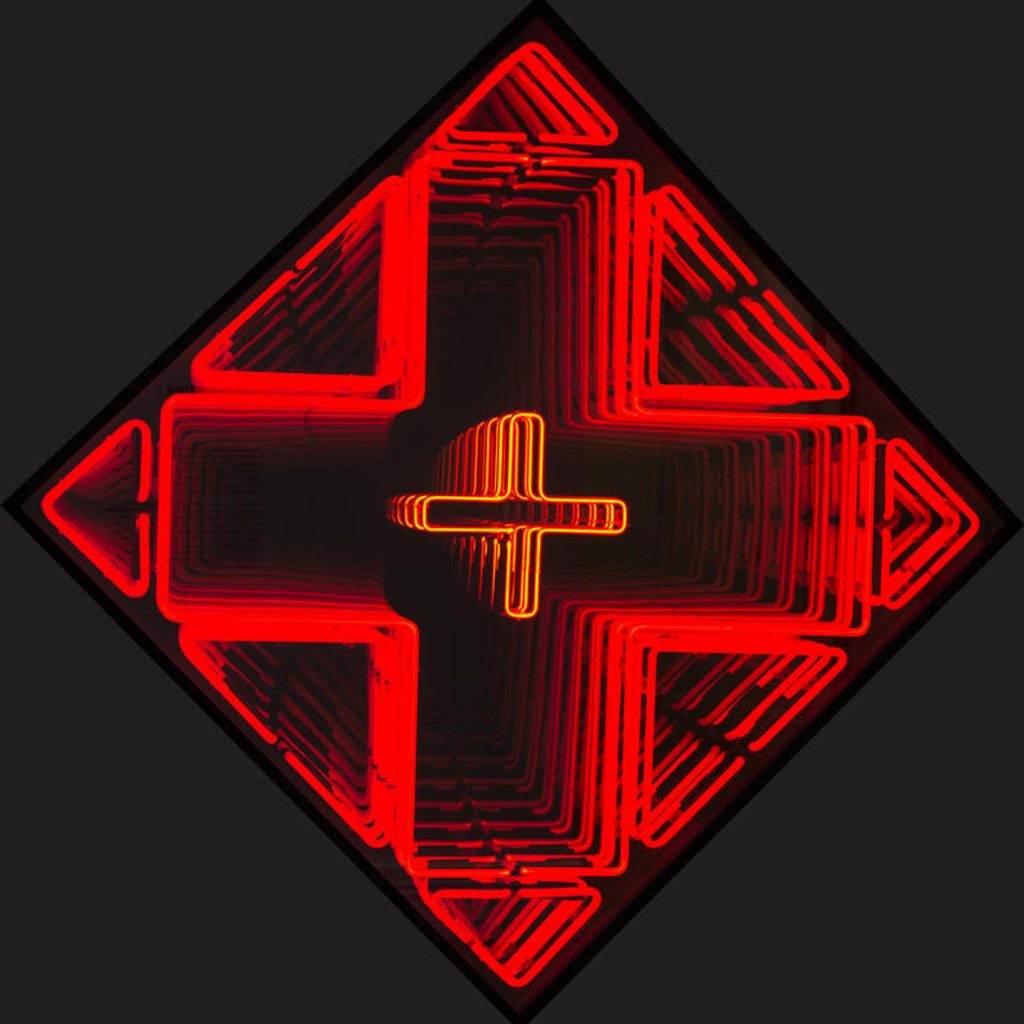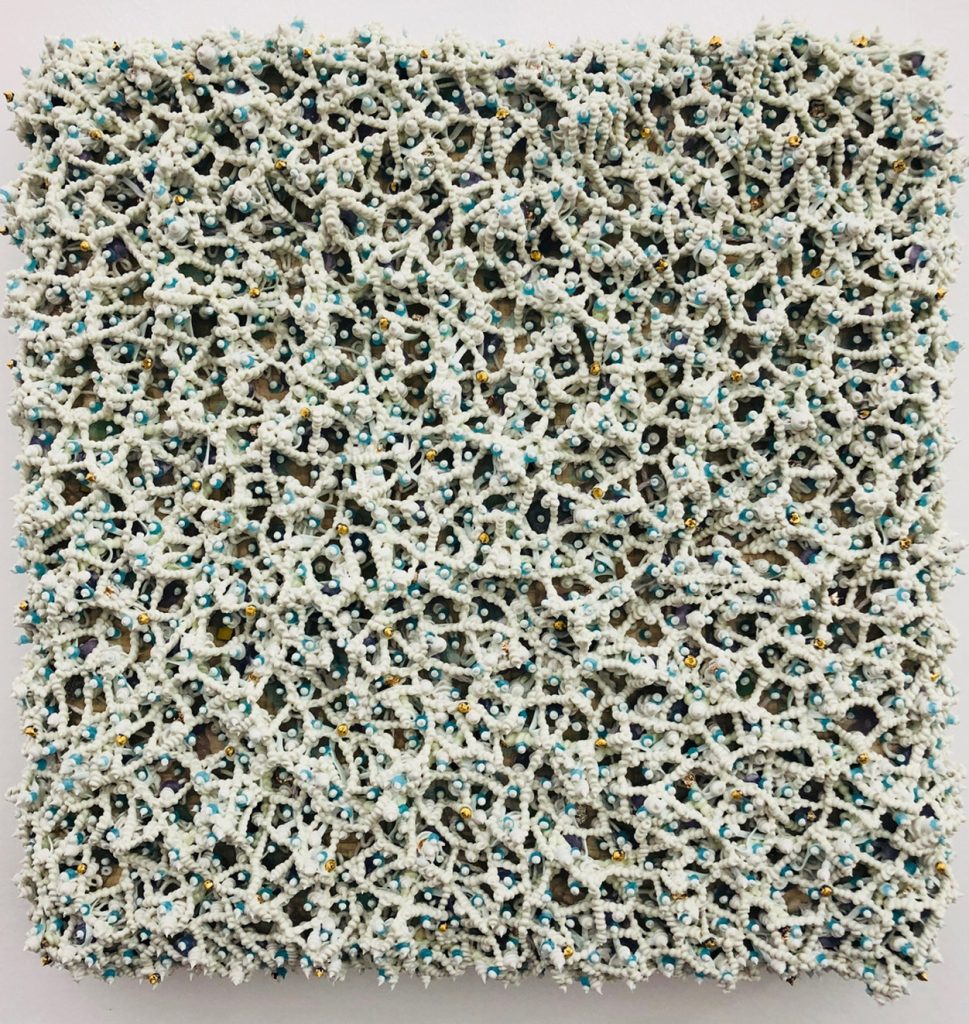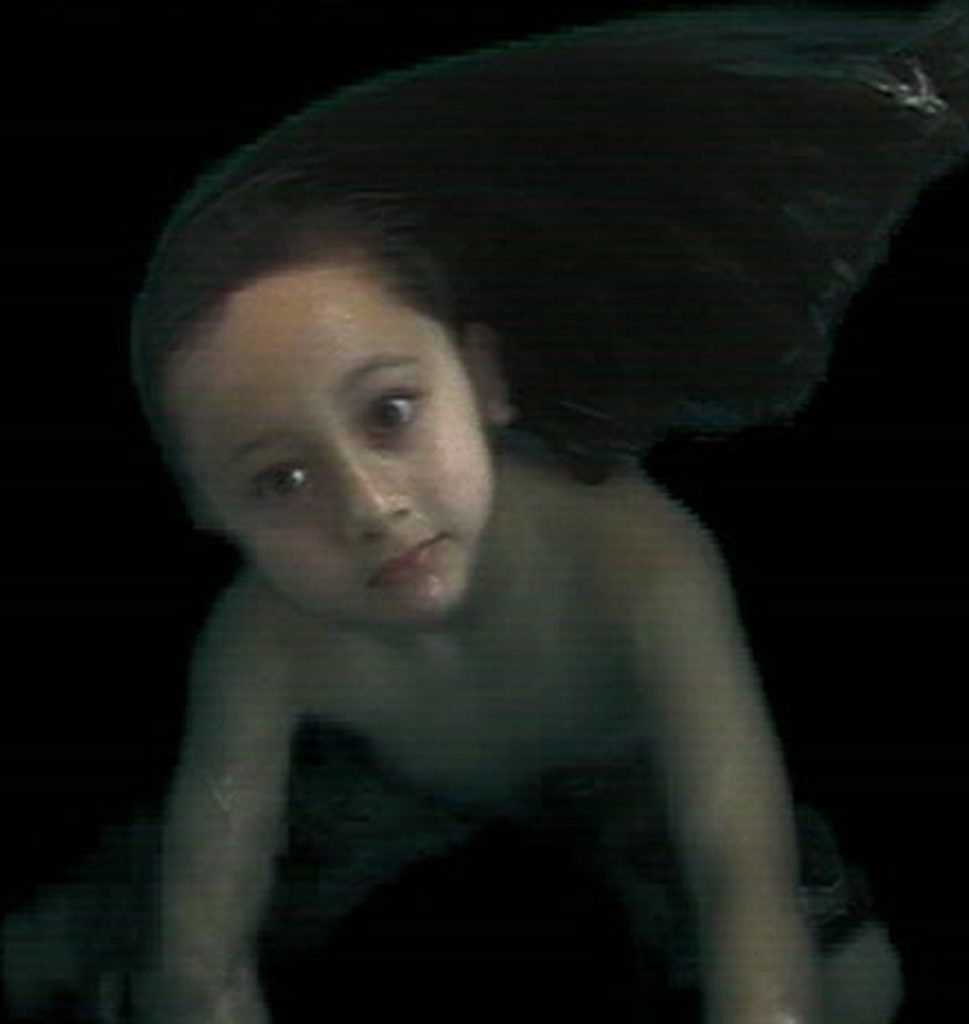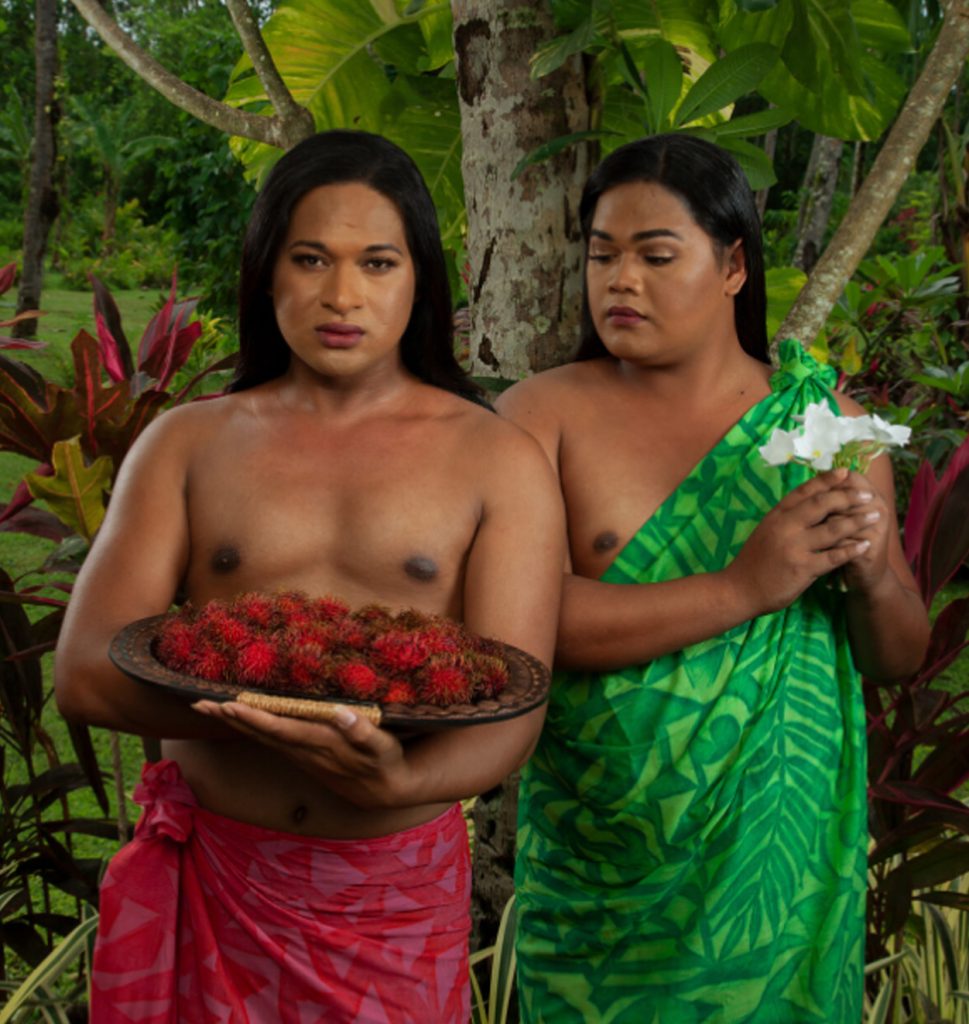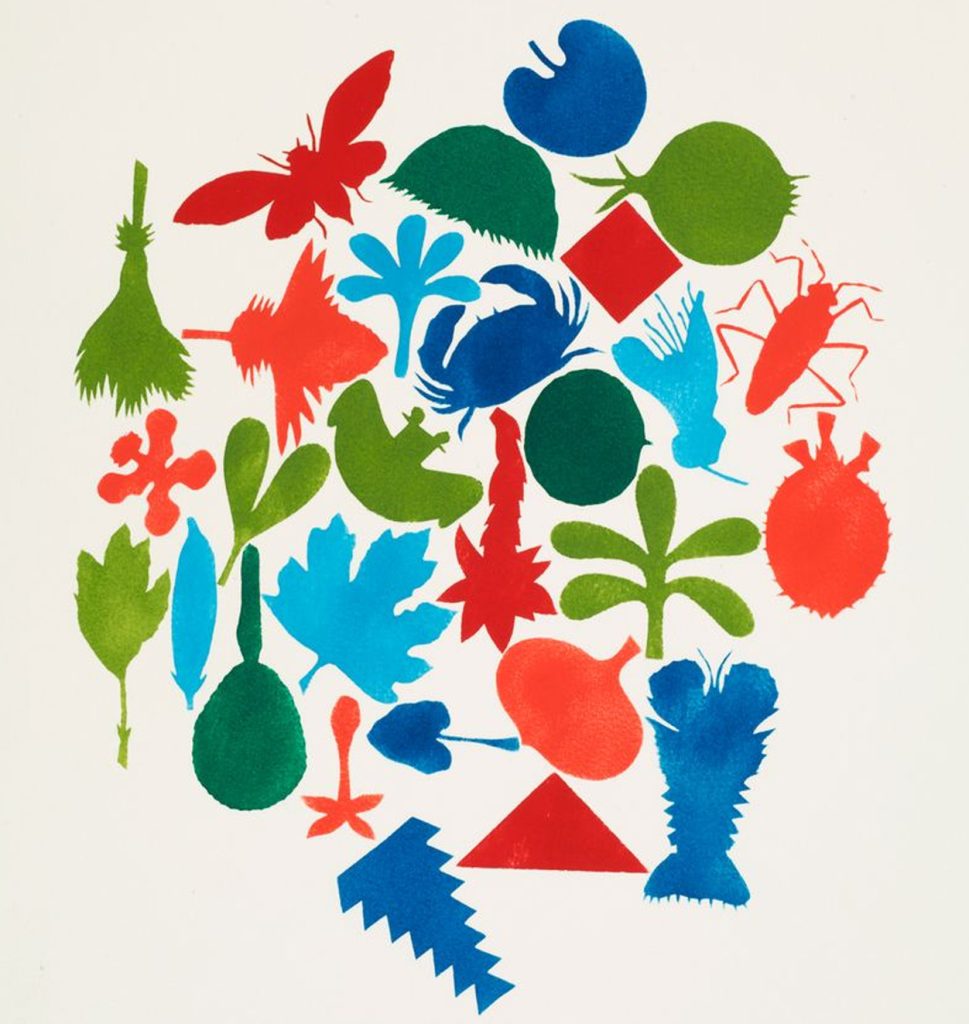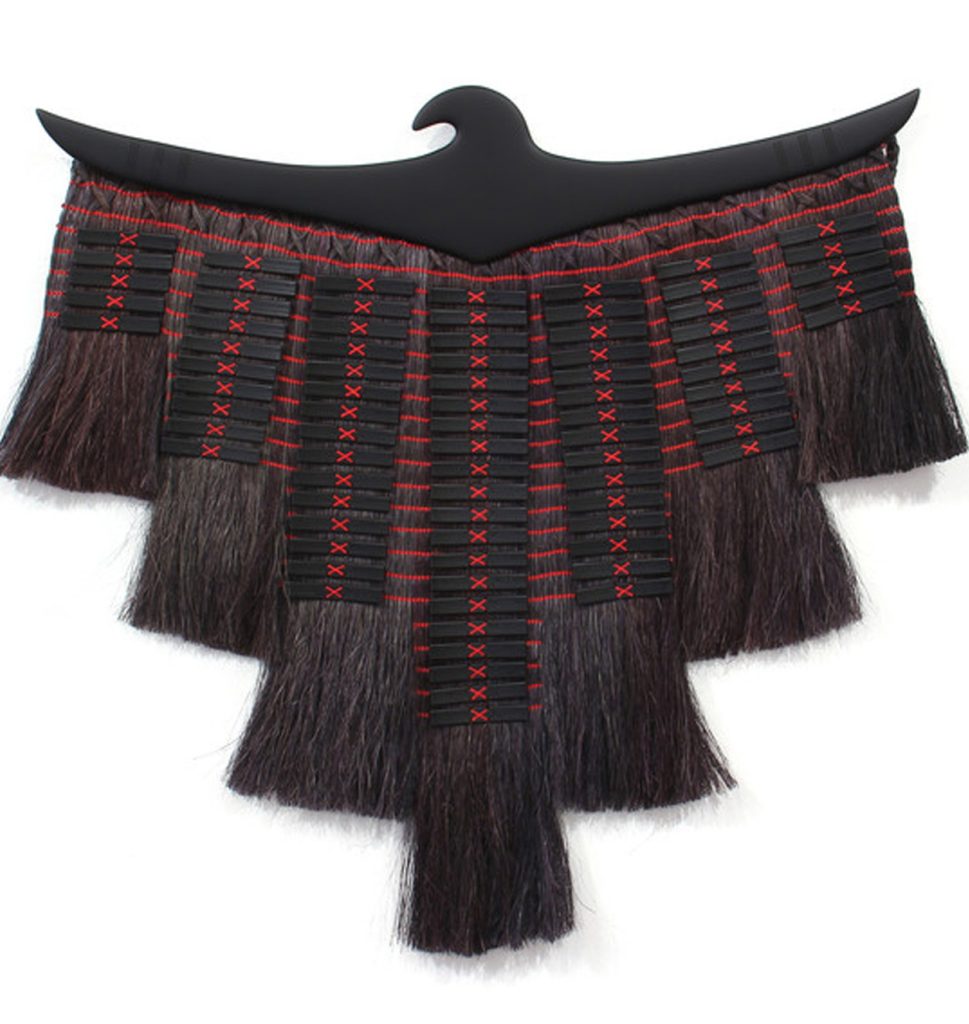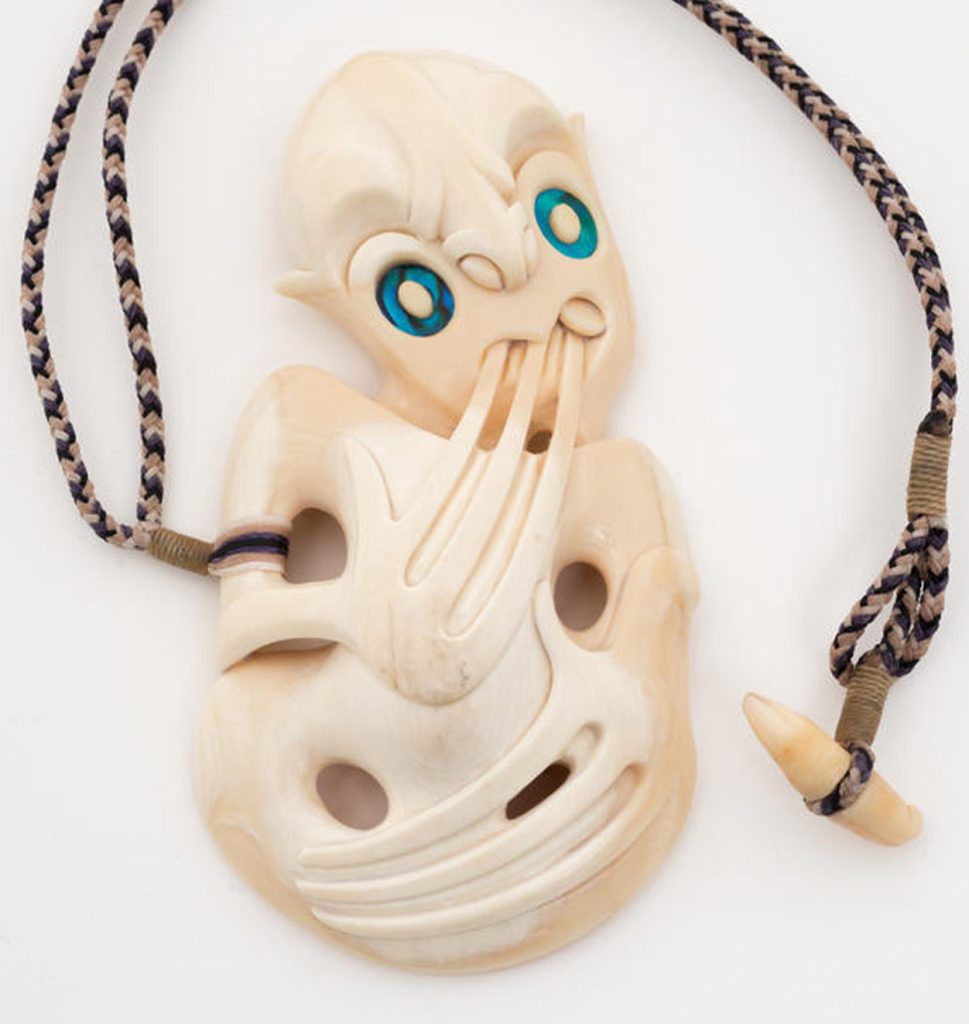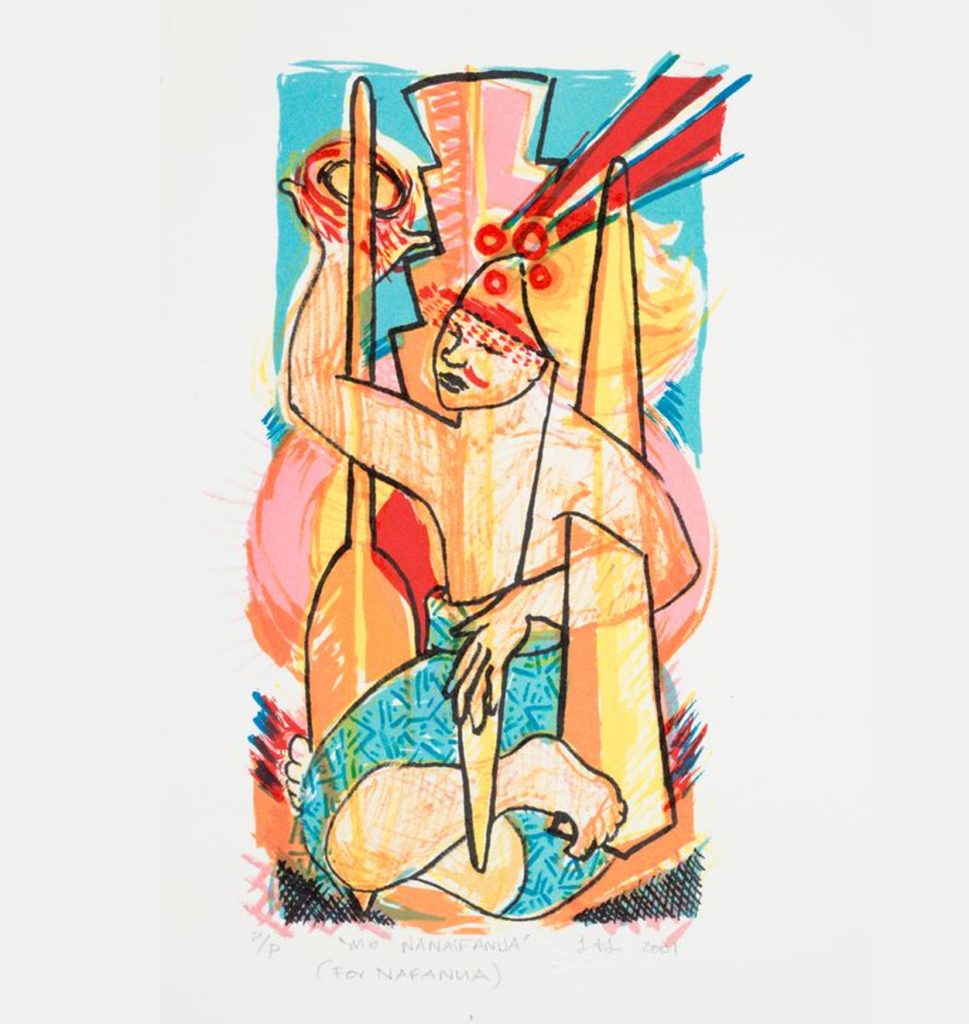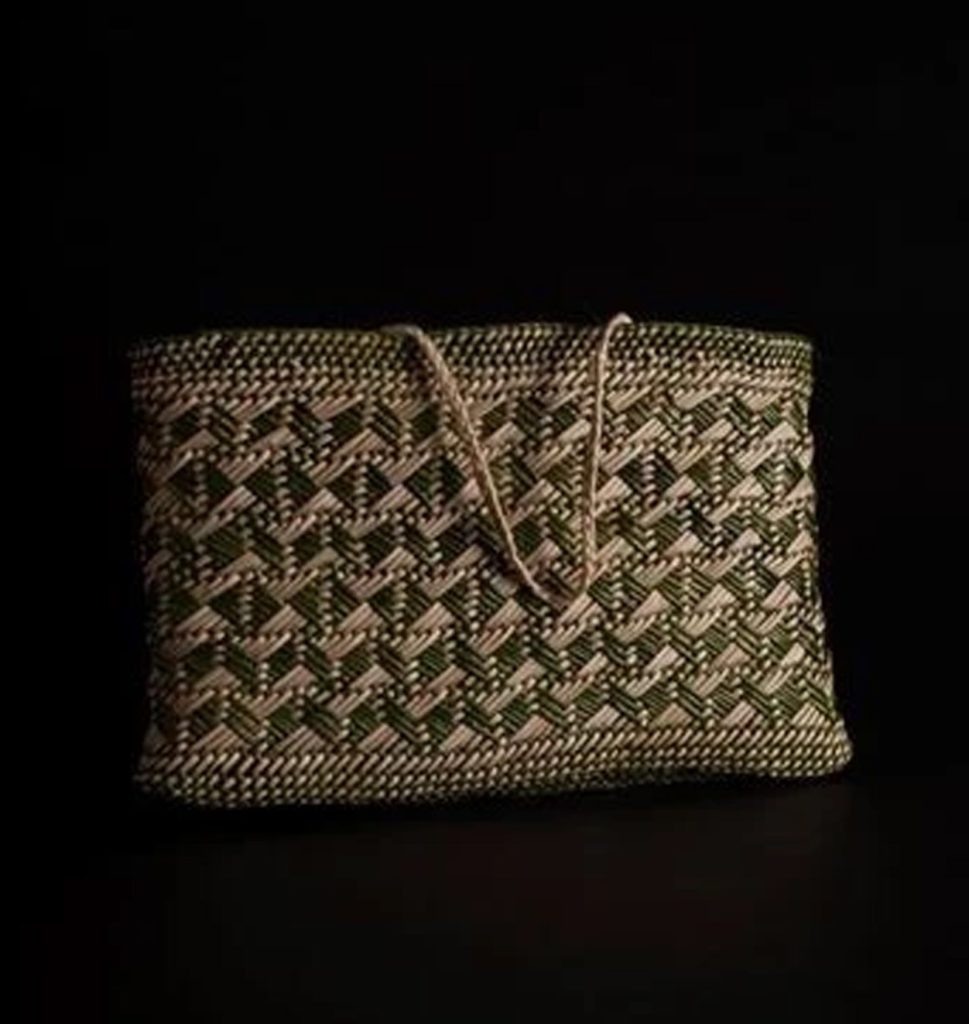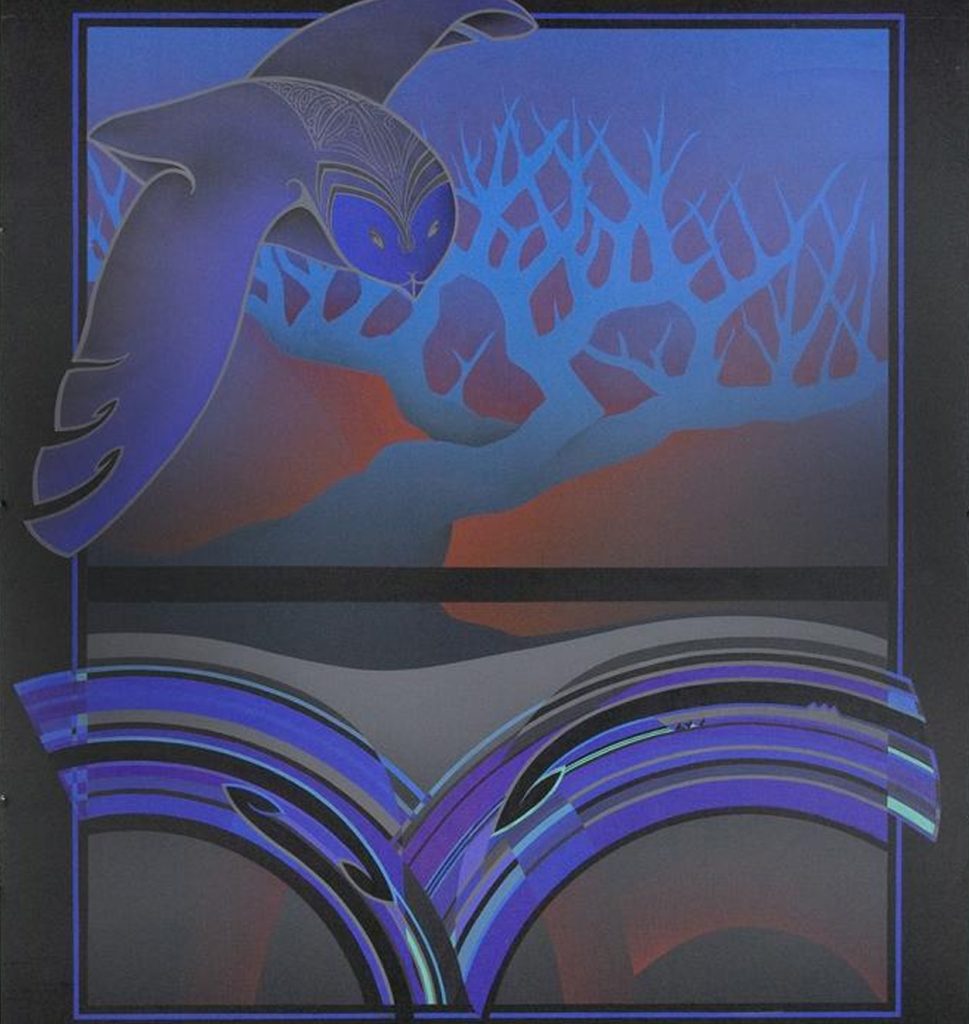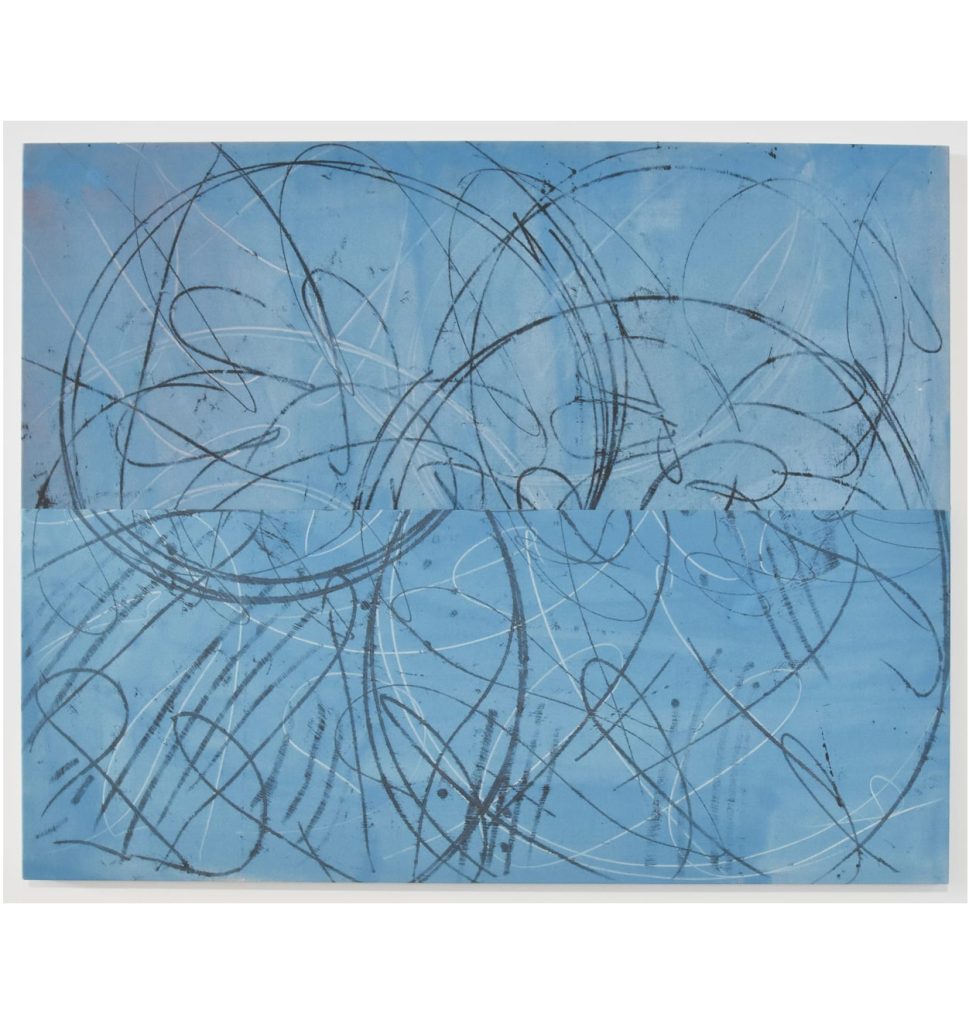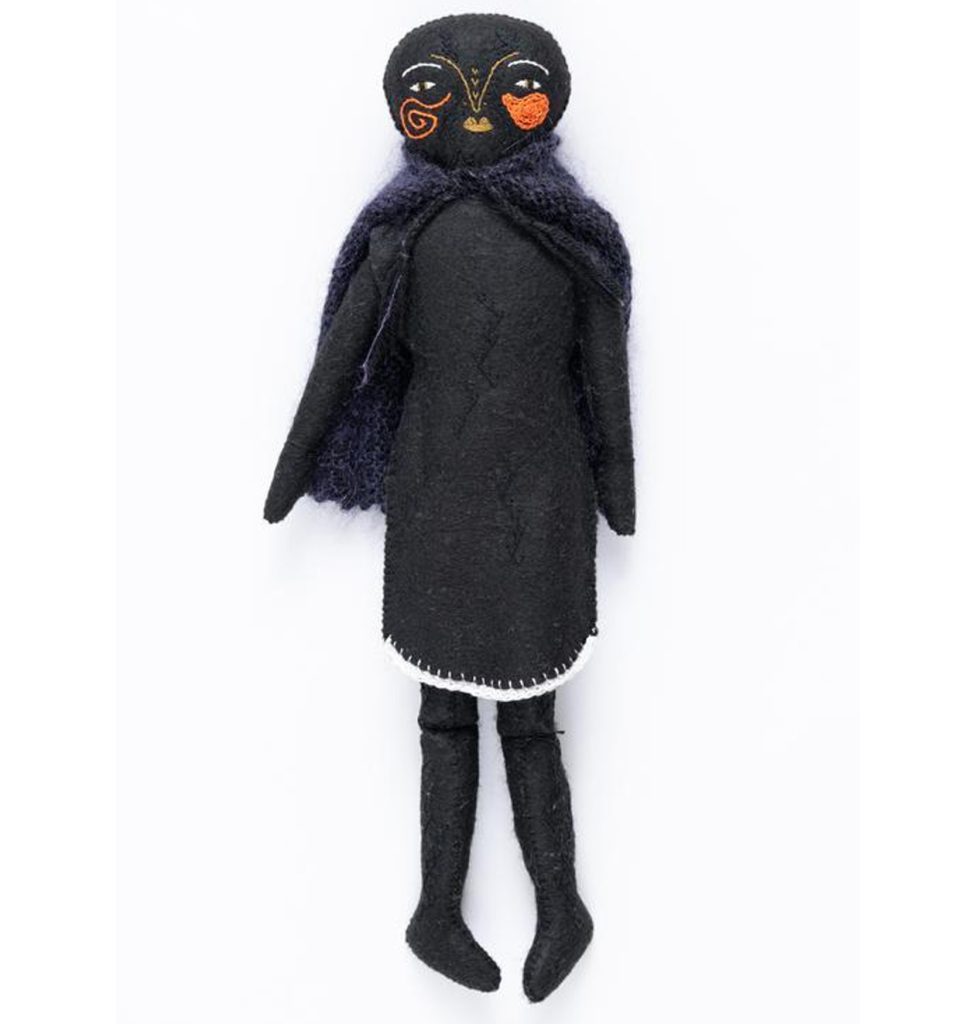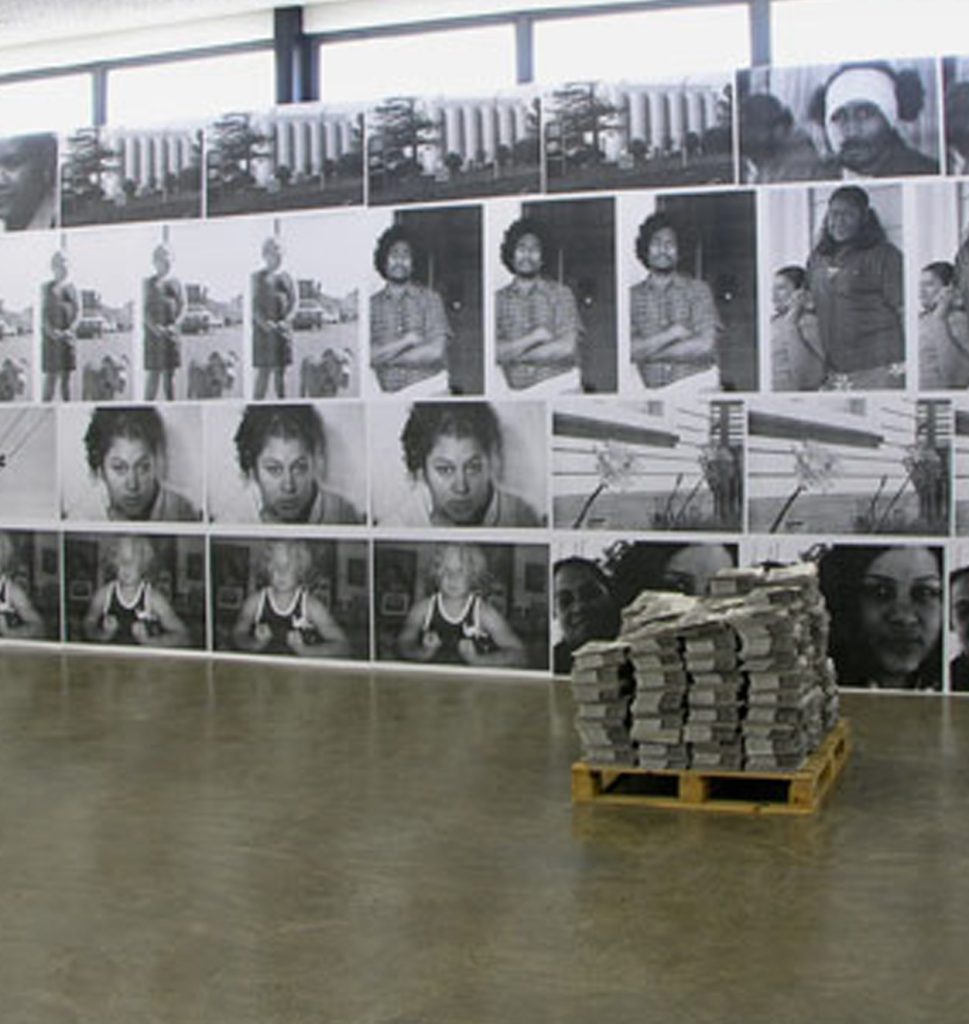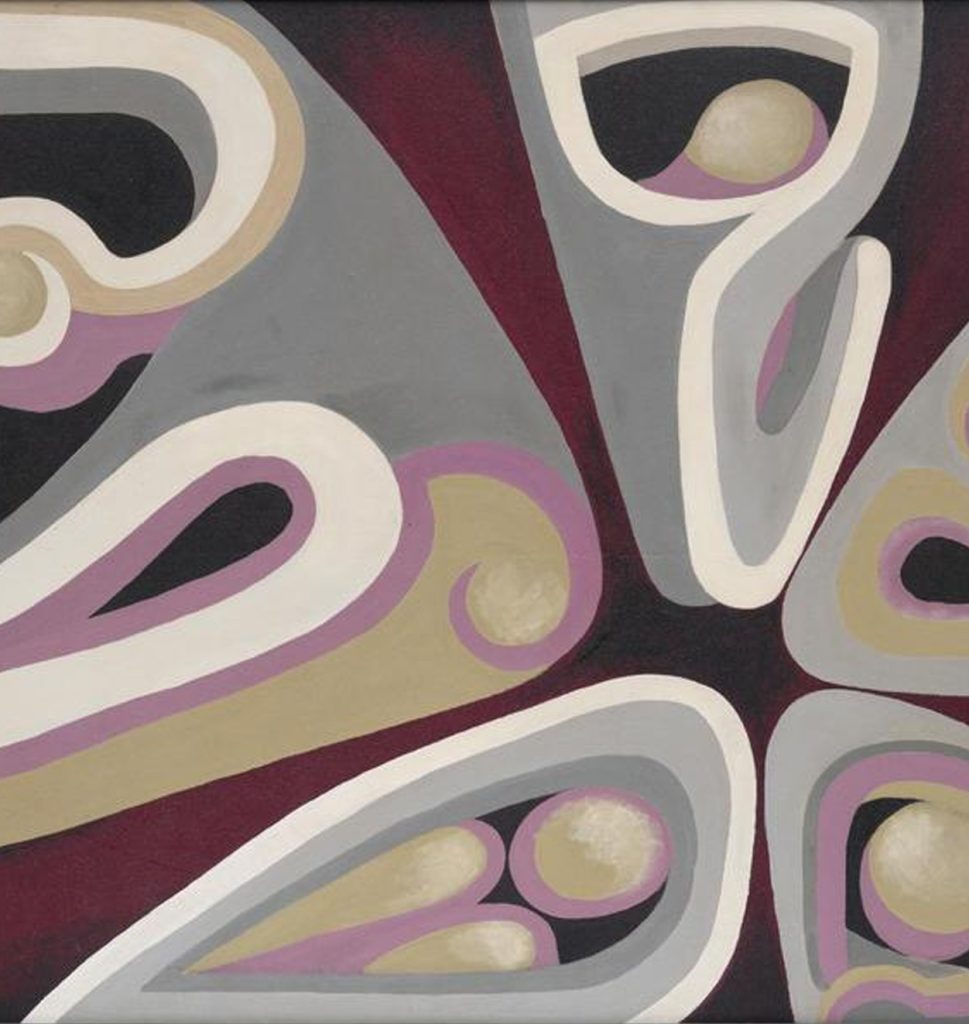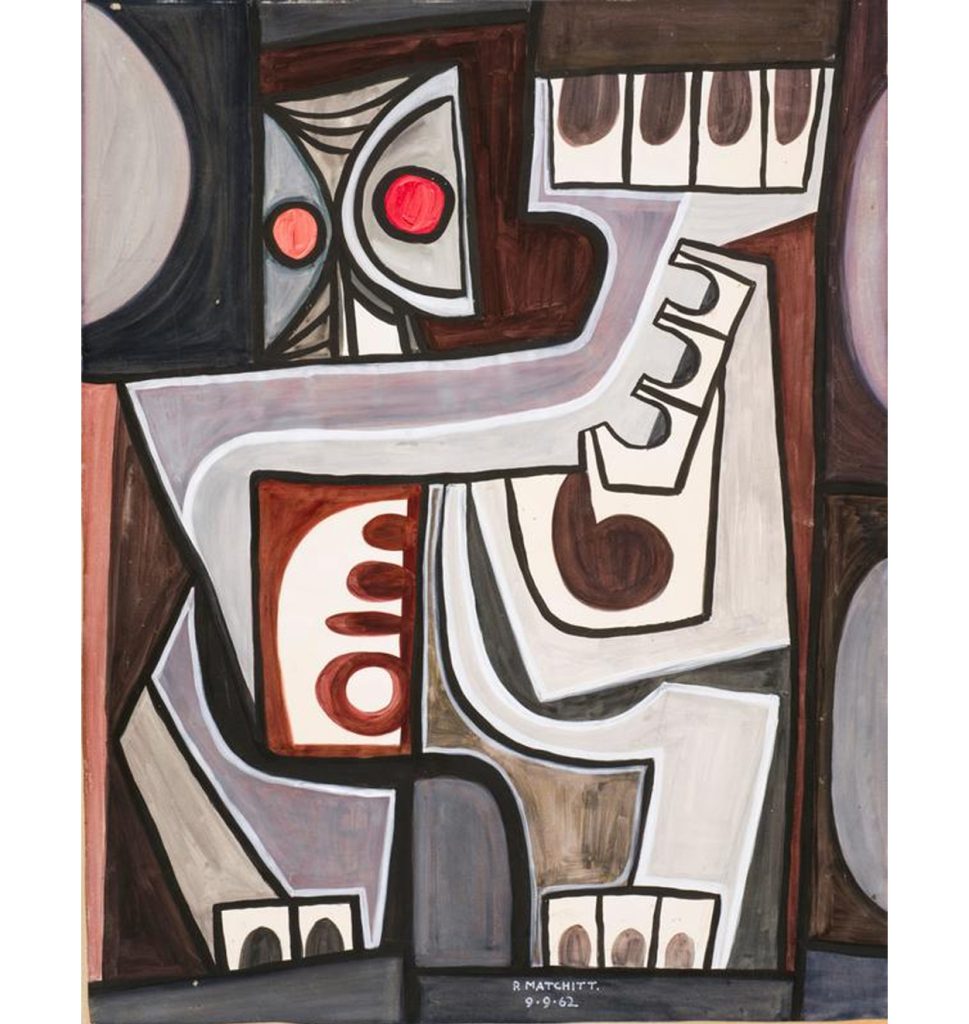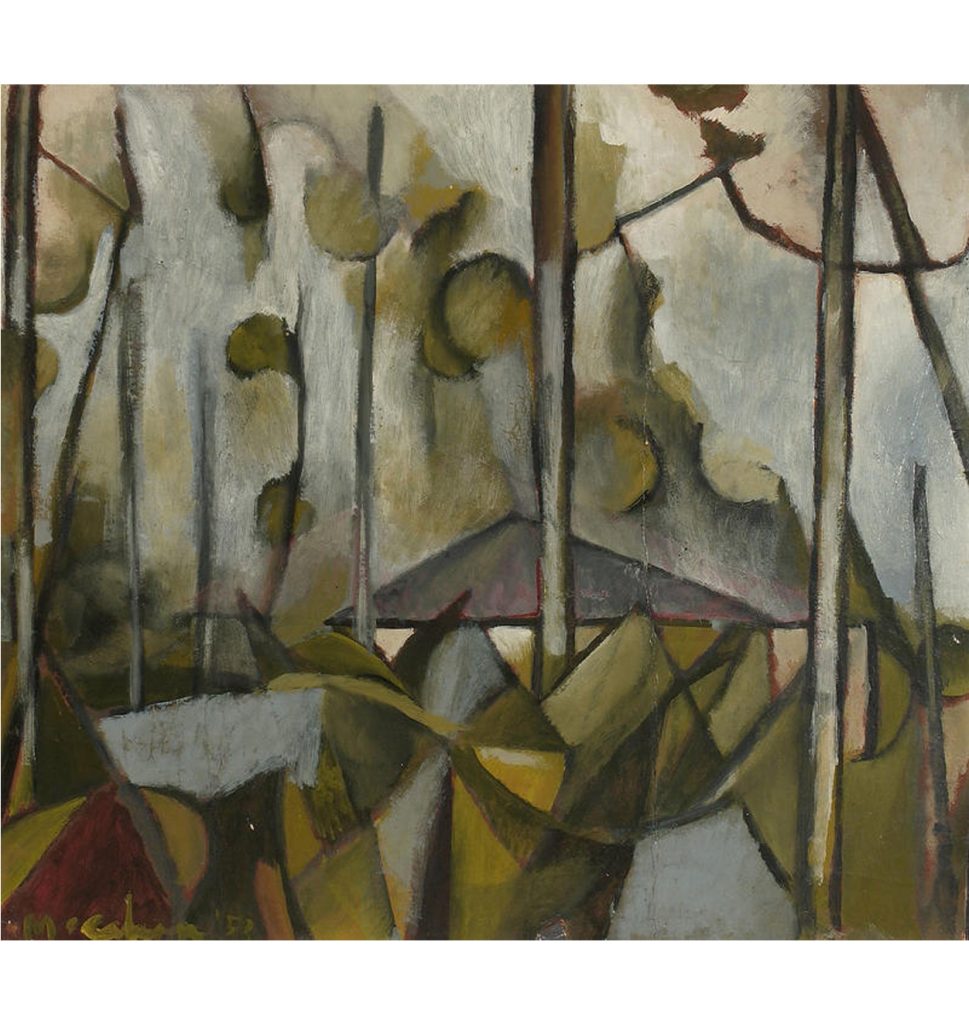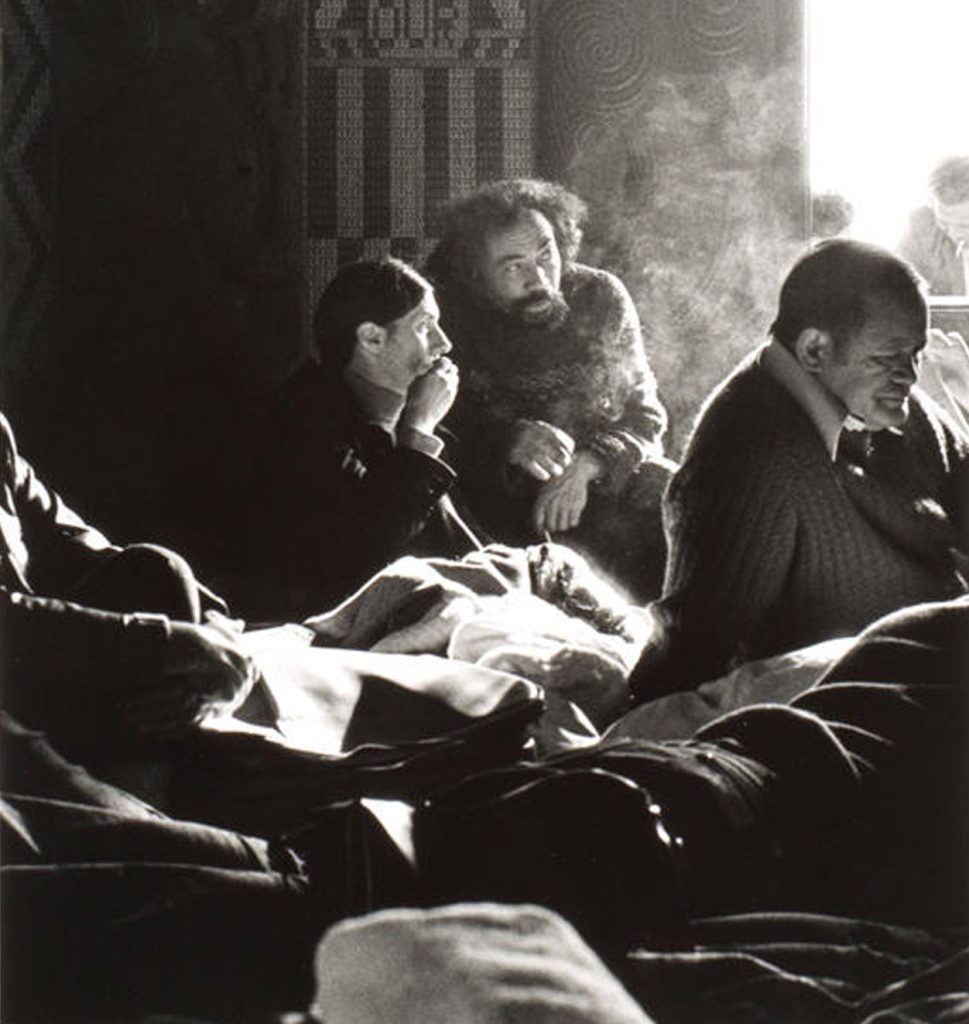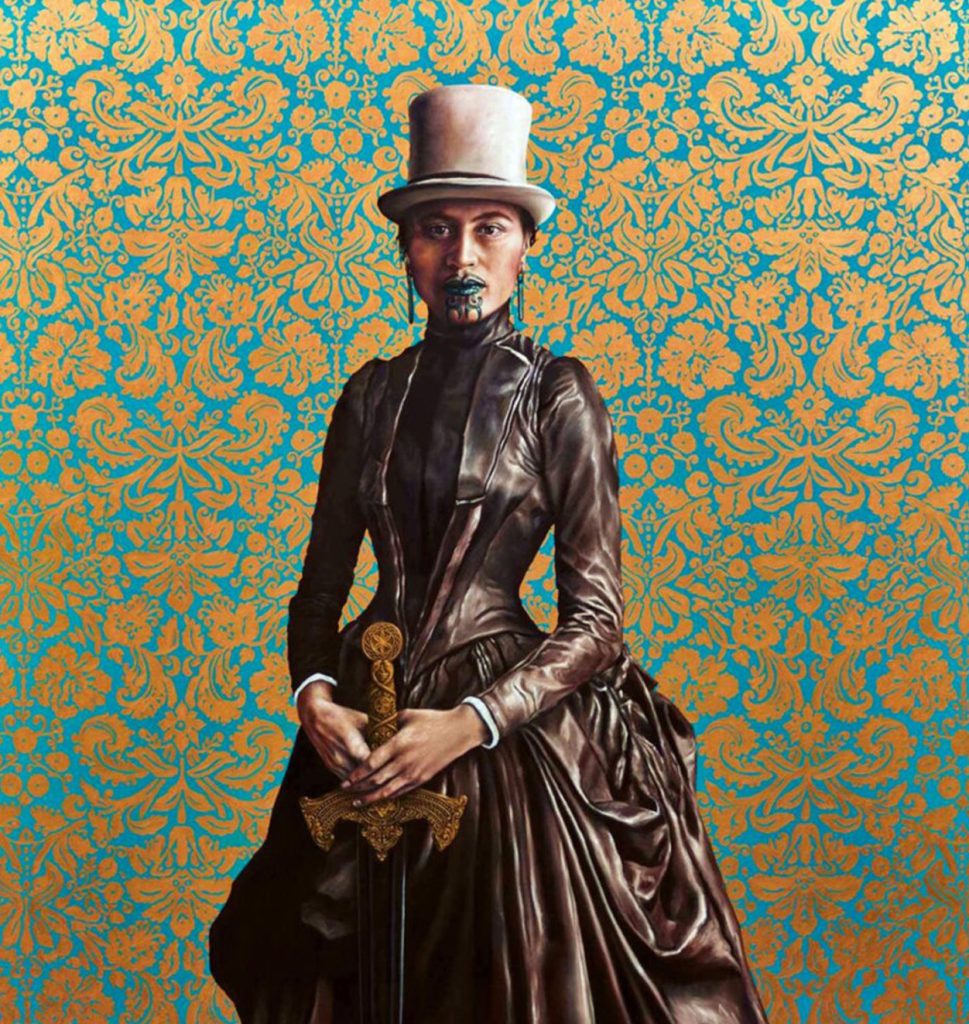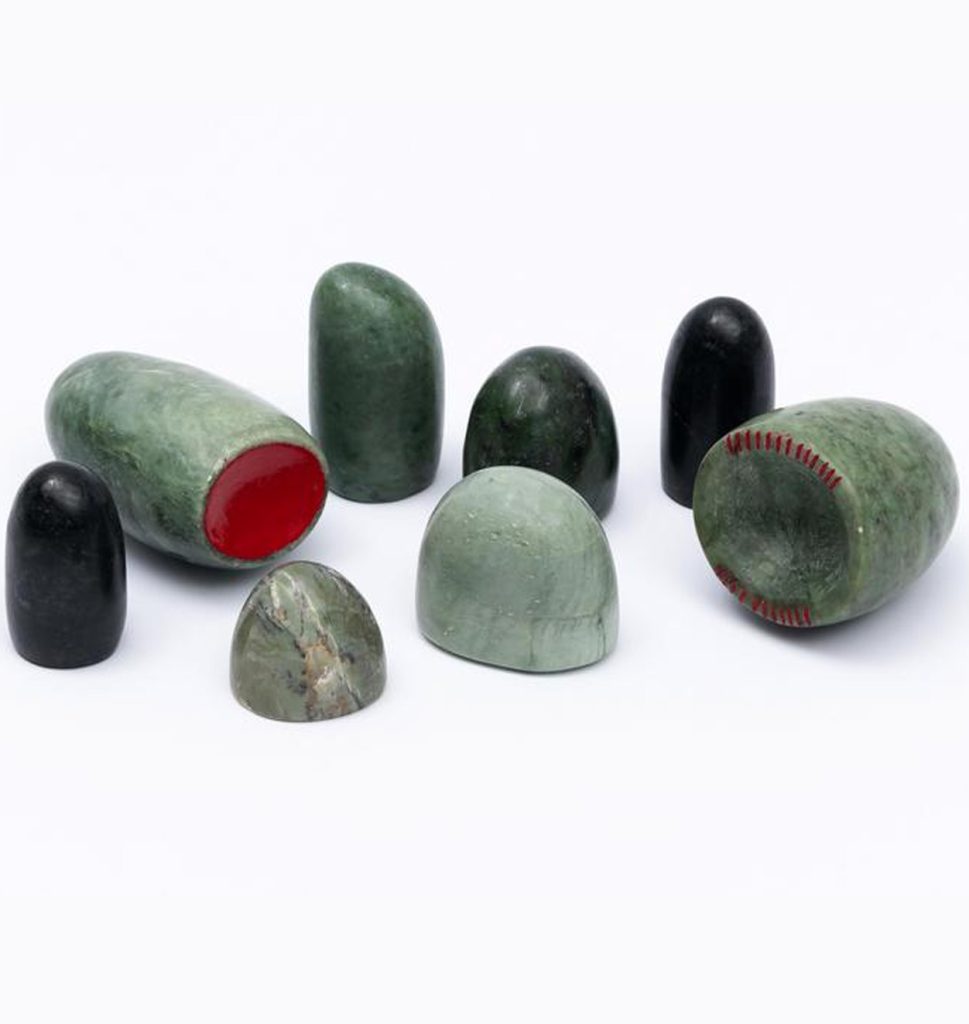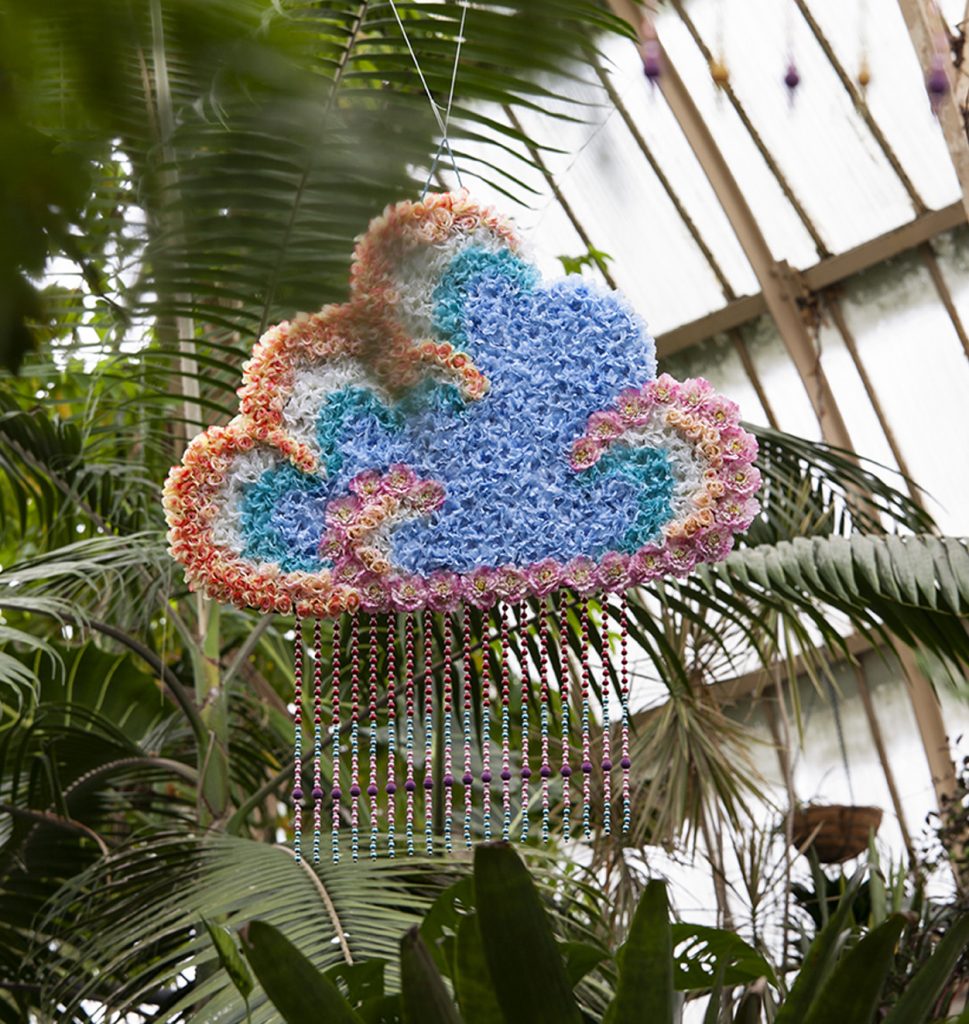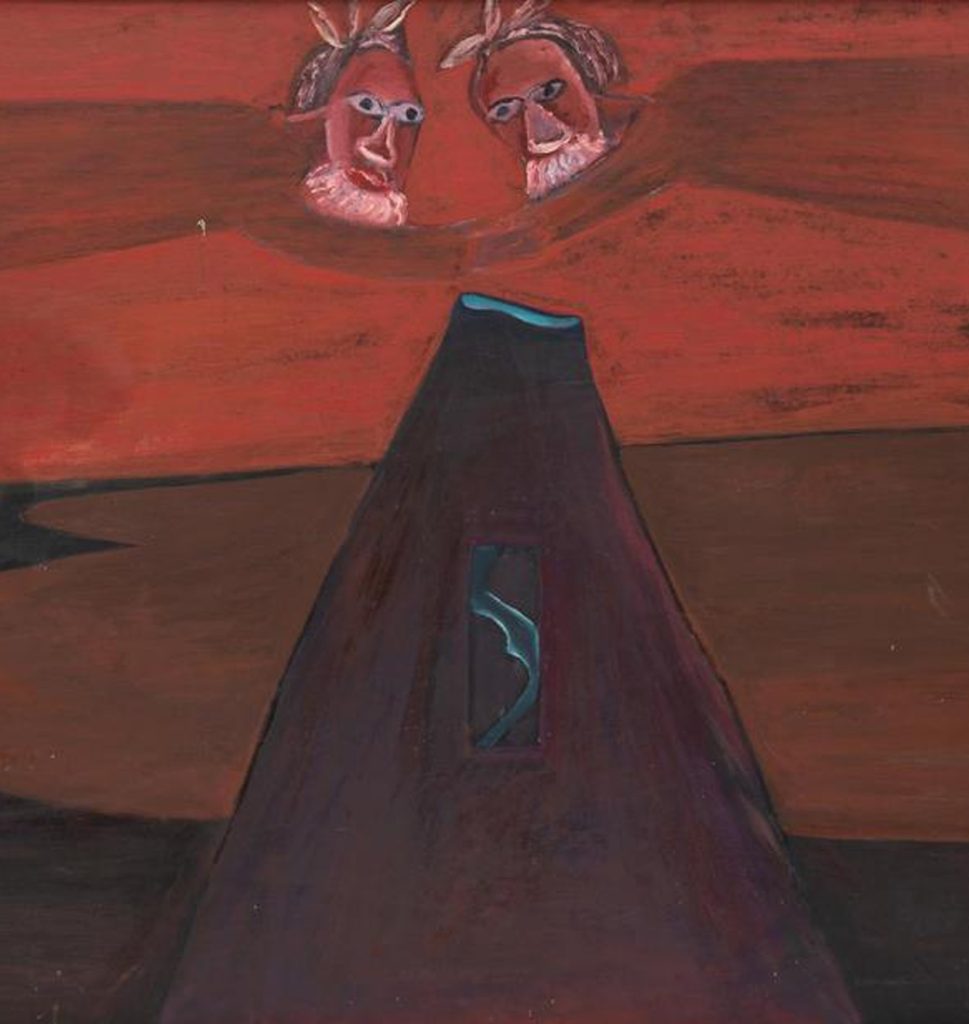Aotearoa Artists H-M
Xoë Hall
Iwi: Kai Tahu, Danish, Irish and English
Xoë Hall is a New Zealand painter based in the Kāpiti Coast. In Xoë’s paintings, legends, pūrākau, atua, idols, and different worlds intersect, resulting in a distinctive hybrid style that is uniquely her own. Her paintings reflect a fusion of influences, creating a visual language that is both intriguing and captivating. Xoë’s ability to merge elements from different cultural traditions and artistic styles contributes to the dynamic and evocative nature of her work.
Bill Hammond (1947-2021)
New Zealander
Christchurch City Art Gallery
McLeavey Gallery
City Gallery Wellington
W D (Bill) Hammond was a Lyttleton-based artist who was a part of the post-colonial gothic movement of the late 1990s. Hammond’s artwork reflected his concern for humanity and its endangered status. In his earlier works, Hammond’s strong interest in music is evident. However, a significant shift occurred in the early 1990s following his journey to the remote Auckland Islands, devoid of human presence and dominated by birds. This experience inspired Hammond to imagine New Zealand in its early stages, even before the arrival of Māori. His artistic themes include the vulnerability of life in a precarious world and the preservation of threatened environments.
Ngahuia Harrison (b. 1988)
Iwi: Ngātiwai, Ngāpuhi
Auckland Art Gallery, Toi o Tāmaki
City Gallery Wellington
Objectspace
Ngahuia Harrison’s lens-based practice focuses on capturing the narratives of hapū and their relationships with bodies of water, particularly within the context of Ngātiwai landscape. Her works explore Māori worldviews of co-dependence and reciprocity within community and consider both past and future histories. Through her solo and group exhibitions, she aims to create a deeper understanding of the interconnectedness of people, land, and water, and the importance of their preservation.
Turumeke Harrington (b. 1992)
Iwi: Ngāi Tahu
Turumeke
Page Galleries
ArtAsiaPacific
Turumeke Harrington is an artist based in Wellington, who works with sculpture and installation. Her work is distinguished by its vibrant and bold colors, as well as its incorporation of domestic forms and materials. Harrington’s artistic approach sits at the intersection between art and design, and considers the ways objects, materials, and color can subvert, challenge, and expand our understandings of mātauranga and te ao Māori.
Chevron Hassett (b. 1994)
Iwi: Ngāti Porou, Ngāti Rongomaiwahine, Pākehā (Irish)
Instagram
Photoforum
Pantograph Punch
Chevron Hassett is a visual artist from Lower Hutt, who works with lens-based media, sculpture, and public installations. His work is deeply rooted in the concept of whanaungatanga, emphasising the connection, establishment, and nurturing of relationships within communities. Hassett’s collaboration extends beyond the boundaries of his art, actively engaging with local communities and diverse groups of people. Through his recent works, he delves into the narratives of socio-cultural identities, urban indigeneity, and colonialism, exploring the intricate histories of the Pacific and indigenous cultures.
Chris Heaphy (b. 1965)
Iwi: Ngāi Tahu, Kai Tahu
Auckland Art Gallery, Toi o Tāmaki
Johnathan Smart Gallery
Gow Landsford Gallery
Chris Heaphy’s work incorporates symbols, signs, and anamorphic figures inspired by everyday objects, pop art, and traditional Māori rock drawings. He addresses issues and questions about culture and identity, deliberately leaving the interpretation of his recurring symbols and signs open-ended. He aims to encourage viewers to acknowledge the ways in which differing cultures, communities, and individuals reveal and define their identities.
André Hemer (b.1981)
New Zealander, German
andrehemer.com
Gow Langsford Gallery
André Hemer is a contemporary artist who combines digital and traditional painting to create abstract works that explore three-dimensionality. His practice reflects a fusion of the digital and physical realms, making him a creator of the digital age. Hemer’s recent works draw inspiration from the natural world, particularly the vibrant colors found in the ever-changing skies.
Dame Louise Henderson (1902-1994)
French, New Zealander
Te Ara
Auckland City Art Gallery
Christchurch Art Gallery
Dame Louise Henderson was a New Zealand abstract painter born in Paris in 1902 and immigrated to Aotearoa in 1925. Her early artworks used observations of her new environment as subject matter, characterised by thoughtful details. Henderson’s artistic practice evolved to emphasise the structural unity of interrelated forms and spaces, along with an expressive use of color, which became the defining features of her work. In the 1930s, she exhibited with the influential art association known as The Group, further establishing her presence in the art scene.
Michael Hight (b. 1961)
New Zealander
Page Galleries
Gow Langsford Gallery
Milford Galleries Dunedin
Michael Hight is a self-taught artist who has been painting since the age of fourteen. Since the late 1990s, he has predominantly painted realist series of beehives set in dramatic New Zealand landscapes, drawing attention to man-made structures slowly being reclaimed by nature. Hight’s photorealistic style captures the beauty of overlooked and discarded objects, rendering the weathered surfaces exquisitely.
Ngaahina Hohaia (b. 1975)
Iwi: Ngāti Moeahu, Taranaki, Ngāti Haupoto, Taranaki, Greece
Auckland Art Gallery, Toi o Tāmaki
City Gallery Wellington
PĀTAKA Art + Museum
Ngaahina Hohaia is a multidisciplinary artist who works with a variety of materials, including shell, wood, fiber, and metal. Her work is heavily influenced by her relationship with Parihaka and its people and addresses the dispossession of Māori land and the ongoing effects of colonisation. With a strong background in traditional weaving and fiber work, Hohaia’s politically charged mixed-media installations explore the discourse of colonisation and cultural collision in Aotearoa New Zealand and assert the power and dignity of the tangata whenua.

Rangituhia Hollis (b. 1978)
Iwi: Ngāti Porou, Ngāti Kahungunu
Circuit
Auckland Art Gallery, Toi o Tāmaki
Rangituhia Hollis is a digital media and animation artist who incorporates references to virtual reality, gaming culture, and documentary-style home videos into his work. He explores themes related to heritage, connection, dislocation, and the experiences of urban Māori in the postcolonial context of Aotearoa New Zealand.
Ralph Hotere (b. 1931-2013)
Iwi: Te Aupōuri
Auckland Art Gallery, Toi o Tāmaki
Te Ara, The Encyclopedia of New Zealand
The Arts Foundation, Te Tumu Toi
Ralph Hotere’s was a New Zealand visual artist whose unique style that was influenced by the Pop Art and Op Art movements, but also by his distance from the art world as an outsider from New Zealand. He used his art as a platform to address important social issues, such as racism, human rights injustices, and environmental concerns. Hotere’s works were outspoken in their criticism of these issues and served as a call to action for viewers to consider their own role in creating a more just and equitable society.
John Hovell (b. 1937)
Iwi: Ngāpuhi, Ngāti Porou
Auckland Art Gallery, Toi o Tāmaki
John Hovell, is a New Zealand visual artist known for his impressive large-scale commissions in wharenui and wharekai, which can be found throughout the North Island. Hovell studied art and kōwhaiwhai under the guidance of Paratene Matchitt and Pineāmine Taiapa developing his own distinct style and philosophy, Throughout his practice, his work has been inspired by the natural beauty of his coastal environment and its patterns, cycles, and signs.
Sarah Hudson
Iwi: Te Atiawa ki Whakarongotai, Ngāti Toa Rangātira
Artist Website
artnow.nz
Kauae Raro
Sarah Hudson’s is a lens-based artist who works across, photography and film, performance, sculpture, and installation. Her works often center around major themes such as representation, indigeneity, gender, and social justice. Hudson is a member of the Mata Aho Collective, a group of four wāhine Māori who collaborate to create large-scale installations with synthetic materials that reference traditional Māori textiles. She also is a founding member of Kauae Raro Research Collective, dedicated to researching whenua as an art material, a component of ceremony, for personal adornment and as rongoā.
Sara Hughes (b. 1971)
Canadian, New Zealander
sarahughes.co.nz
Auckland Art Gallery
Gow Langsford Gallery
Sara Hughes is a visual artist known for her vibrant and dynamic work that spans various mediums, including intimate paintings, immersive installations, and large-scale public projects. Her artistic practice combines conceptual ideas with a sophisticated use of color and composition. Through her art, she recreates her personal encounters with changing light, layering colors on canvases to evoke specific moments in time and capture the essence of illumination.
Christina Hurihia Wirihana (b. 1949)
Iwi: Ngāti Maniapoto, Ngāti Raukawa, Ngāti Whāwhākia, Tainui/Waikato,
Ngāti Pikiao, Ngāti Rangiunuora, Te Arawa
Auckland Art Gallery, Toi o Tāmaki
Christina Hurihia Wirihana is a kairaranga/weaver from Aotearoa New Zealand who began to learn weaving techniques while at secondary school. Her mother, Matekino Lawless, was her most significant influence. In 1986, Wirihana became the first lecturer to teach raranga at a tertiary level when she started at Waiariki Institute of Technology in Rotorua. She creates works using materials such as houhi (lacebark), harakeke (flax), kiekie (climber), and pīngao (sedge), and incorporates natural dyes including raurēkau, paru, and tānekaha. Her contributions to raranga have helped to preserve and promote this important aspect of te ao Māori.
Lonnie Hutchinson (b. 1963)
Iwi: Ngāi Tahu, Kai Tahu, Sāmoa, Scotland, England
Auckland Art Gallery, Toi o Tāmaki
Brick Bay Sculpture Trail
The Central Art Gallery
Lonnie Hutchinson is a multidisciplinary visual artist from Aotearoa who explores issues of female experience from indigenous and feminist perspectives. Her practice spans Māori, Sāmoan, and Western traditions and encompasses a range of mediums, including printmaking, sculpture, installation, and performance art. Hutchinson’s work often incorporates traditional Māori and Sāmoan motifs and symbols, as well as contemporary materials and techniques. She is particularly interested in the interplay of form, light, and shadow, and often uses these elements to create dynamic, interactive installations.
Simon Ingram (b. 1971)
New Zealander
Auckland Art Gallery
City Gallery Wellington
Gow Langsford
Simon Ingram is a New Zealand visual artist whose practice revolves around the intersection of art and technology, forging a dialogue between the two. His work is characterised by a collaborative relationship between the artist, the apparatus used, and the world we inhabit. Ingram’s multidimensional practice encompasses various mediums, ranging from machines that translate radio waves from space or human brainwaves into painted forms, to the creation of synthetic images generated by artificial intelligence networks.
Ioane Ioane (b.1962)
Sāmoan
Ioane Ioane is a New Zealand multi-disciplinary artist of Sāmoan descent. He is interested in the interplay of Sāmoan cultural heritage and contemporary New Zealand. His practice acknowledges the spiritual and transitional nature of the Sāmoan term ‘va’ (the space between) and works across a range of media including painting, sculpture, performance and installation.
Ana Iti (b. 1989)
Iwi: Te Rarawa
Auckland Art Gallery, Toi o Tāmaki
Circuit
anaiti.art
Ana Iti’s is a visual artist from Aotearoa who works across sculpture, video, and text. She is known for exploring the practice of history-making through shared and personal narratives. In her recent work, Iti has focused on the ways in which personal and collective stories can be used to create and shape history. Her work often draws on her own experiences as a Māori woman, as well as on the stories and perspectives of others in her community.
Robert Jahnke (b. 1951)
Iwi: Ngāi Taharora, Ngāti Porou, Te Whānau a Iritekura, Ngāti Porou, Te Whānau a Rākairoa, Ngāti Porou, Samoan, German, Irish
Auckland Art Gallery, Toi o Tāmaki
Arts Foundation NZ
Lightworx Gallery
Robert Jahnke is a New Zealand visual artist who explores issues related to identity, colonisation, intercultural exchange, and Māori creation narratives. His work often reflects his deep engagement with Māori culture and history, and his desire to use art as a means of exploring and communicating Māori perspectives on these issues. Jahnke is also a respected academic who holds the position of Professor of Māori Visual Arts at Massey University. He played a key role in the establishment of the Toioho ki Āpiti arts programme at Massey in 1991, which has since become one of New Zealand’s leading institutions for Māori visual arts education.
Claudia Jowitt (b. 1989)
iTaukei, Fijian
Melanie Roger Gallery
Bartley and Company
Claudia Jowitt is a New Zealand painter of Pākeha and iTaukei, Fijian descent. Her abstract, three-dimensional paintings reference and pay homage to the coral reefs found in Fiji and the wider South Pacific.
Jimmy James Kouratoras (b. 1972)
Iwi: Tainui Waikato, Ngāti Tīpā Waikato, Crete, Greece
Auckland Art Gallery, Toi o Tāmaki
Artist Website
Artbay Gallery
Jimmy James Kouratoras is a New Zealand visual artist with a background in film and TV industries. This experience has given him extensive knowledge of paint and sculptural media, as well as skills in painting from reference, rendering textures, and environmental set design.
Since 2010, Kouratoras has focused on creating his own art, using it as a means to tell his personal stories and explore his indigenous connections and ancestral knowledge. His work often merges subjects of Māori and Cretan heritage with elements of popular culture, resulting in a unique and distinctive artistic style.
Robyn Kahukiwa (B. 1938)
Iwi: Australian born New Zealander, Ngāti Porou, Te Aitanga-a-Hauiti,
Ngāti Kōnohi, Te Whānau-a-Ruataupare, Ngāti Porou
Auckland Art Gallery, Toi o Tāmaki
Black Door Gallery
Robyn Kahukiwa is a Māori visual artist whose paintings explore themes related to the diversity of urban Māori and Pacific communities, as well as her own personal search for cultural identity. Her work often incorporates tipuna, native birds, plants, and trees, creating a vibrant and dynamic visual language that reflects the complexities of contemporary Māori experiences.
Kahukiwa’s paintings are often large in scale, and her use of bold colors and strong, graphic lines creates a sense of energy and movement. Her work is informed by her experiences as a Māori woman, and she often uses her art as a platform to address issues related to gender, social justice, and indigenous rights. Through her paintings, Kahukiwa seeks to challenge traditional notions of what it means to be Māori in a modern, urban context.
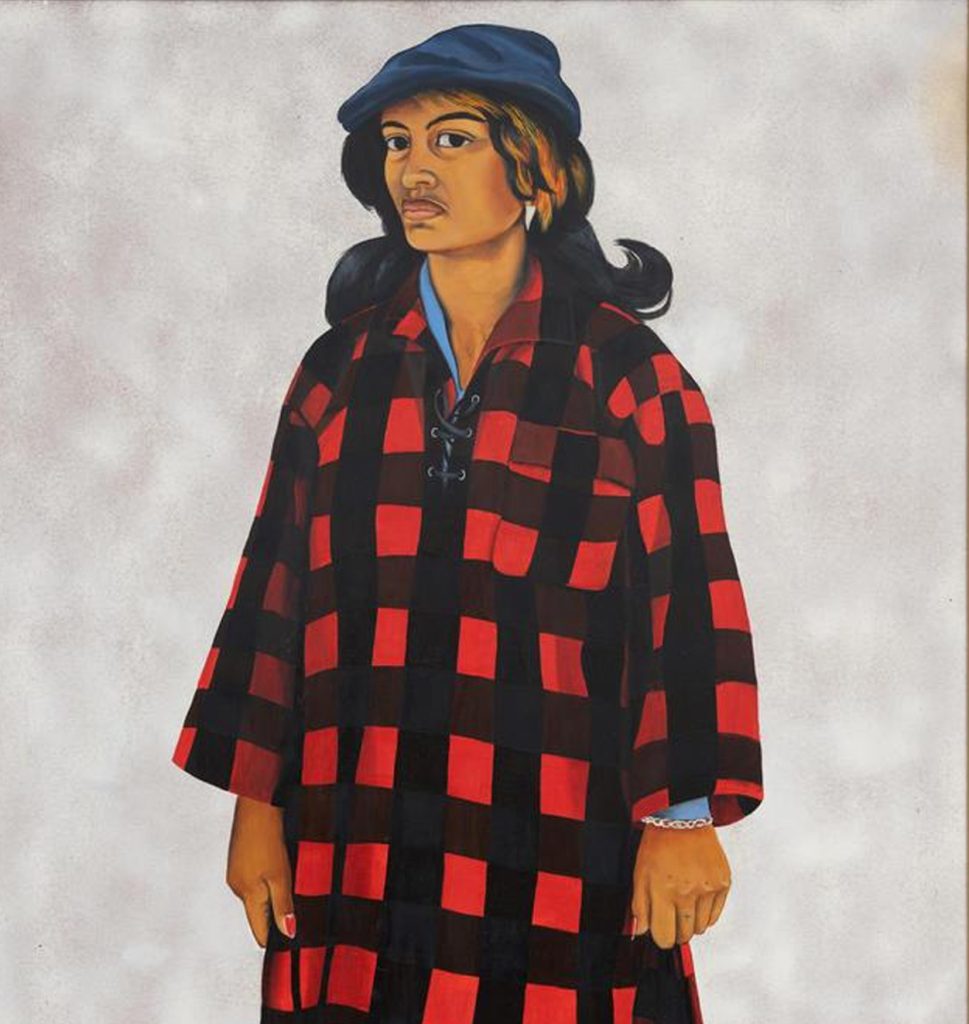
Leilani Kake (b. 1977)
Iwi: Ngāpuhi, Tainui Waikato, Rakahanga-Manihiki Cook Islands
Auckland Art Gallery, Toi o Tāmaki
Pimpi Knows, Pacific Island Management, Production + Ideas
Leilani Kake is a multi-disciplinary artist, curator, and educator who has emerged as a leading voice in contemporary Māori art. Her work spans a range of media, including video installation, sculpture, and performance, and is characterised by an exploration of states of transition, ritual, and whakapapa (genealogy) informed by indigenous knowledge systems.
Kake’s video installations often incorporate elements of performance and sound, creating immersive and experiential works that challenge traditional notions of what video art can be. Her work explores themes related to identity, culture, and spirituality, and often incorporates imagery and iconography drawn from Māori mythology and cosmology.
Eugene Kara (b. 1973)
Iwi: Ngāti Koroki Kahukura, Ngāti Pāhauwera, Ngāti Tīpā, Waikato,
Ngāti Kōata, Ngā Rauru, Te Ātihaunui-a-Pāpārangi, Ngāti Tūwharetoa
Auckland Art Gallery, Toi o Tāmaki
Artist Website
Eugene Kara is a Māori visual artist and cultural advocate who specialises in public sculpture and lost wax bronze casting. He is well-known for his large-scale public artworks, many of which can be found in prominent public spaces throughout New Zealand.
Kara is particularly interested in the integration of indigenous knowledge into regional planning and development, and has worked on a number of projects that seek to promote Māori cultural values and perspectives. He was a co-founder of the first Māori bronze casting studio at the New Zealand Māori Arts and Crafts Institute in Te Puia, Rotorua, and has worked closely with other artists and cultural organizations to promote and preserve Māori art and culture.
Emily Karaka (b. 1952)
Iwi: Waikato, Ngāpuhi, Ngāi Tai ki Tāmaki, Te Kawerau ā Maki, Ngāti Tamaoho, Te Ākitai Waiohua, Te Ahi Waru, Ngāti Mahuta, Ngāti Tahinga, Ngāti Hine
Auckland Art Gallery, Toi o Tāmaki
Artist Website
Emily Karaka’s work traverses the political and the personal, celebrating the joys of family, as well as historic and contemporary political issues. Recurring themes in her work include the environment, love, and a historic narrative detailing her unfolding knowledge as a descendant of the Māori tribes of Tamaki Makaurau on the Auckland Isthmus. Karaka’s abstract expressionistic paintings are notable for their exuberant use of color, strong imagery, densely layered application of paint, and political commentary.
Kauae Raro Research Collective (est. 2019)
Instagram
Kauae Raro Research Collective
The Kauae Raro Research Collective was founded in 2019 by Lanae Cable, Jordan Davey-Emms, and Sarah Hudson. Coming together as friends with shared interests in research, art, pottery, rongoā Māori, and whakapapa, the collective is deeply committed to exploring and sharing their work centered around the land. Their focus lies in considering the land as an art material, an integral element of ceremony, a source of personal adornment, and a valuable resource for rongoā, the traditional Māori medicine. Through their online platform at kauaeraro.com and their presence on Instagram, they publish various aspects of their research journey.
Natasha Keating (b. 1972)
Iwi: Ngāti Tūwharetoa, Ngāi Tūhoe, Te Āti Haunui-a-Pāpārangi
Auckland Art Gallery, Toi o Tāmaki
Natasha Keating is a mixed-media artist whose artistic practice incorporates techniques of whakairo (carving), carved relief work, and paint and ink on wooden planks, all of which are significant features of her work. When assembled together, these techniques represent a symbol of rebuilding forests, acknowledging the importance of recognizing and empowering rangatiratanga (authority).
Gina Kiel
New Zealander
Gina Kiel is a visual artist who explores themes related to life, death, spirituality, and pop culture. Kiel’s artistic approach is characterized by the use of flowing lines and forms, creating a sense of movement and fluidity in her compositions. She employs bold and minimal compositions, allowing the subjects of her artwork to take center stage. Her palette often incorporates vibrant and psychedelic colors, adding an element of dynamism and visual impact to her pieces. She is also a member of The Dream Girls’ Collective alongside Xoe Hall and Miriama Grace-Smith.
Yuki Kihara (b. 1975)
Sāmoan, Japanese
Yuki Kihara is an interdisciplinary visual artist of Sāmoan and Japanese descent who works across a range of media including performance, sculpture, videography, photography and curatorial practice. Her work challenges the dominant, monocultural historical narratives to reveal the toxic influence of colonialism from a Fa’afafine perspective.
Richard Kileen (b. 1946)
New Zealander
Te Papa
richardkileen.com
McLeavey Gallery
Richard Killeen is a New Zealand visual artist known for his distinctive aluminum cutout works. In 1978, he introduced these iconic pieces, which were first exhibited at the Peter McLeavey Gallery. In 1987, Killeen started incorporating computer-generated images into his artwork, eventually transitioning to a completely digital output in 2003. Initially, he printed his images on canvas but later explored various supports such as cardboard, corflute, aluminum, and plywood. Since 2012, Killeen has been actively developing an Image Database that features its own categories and criteria. This database serves as a resource for generating exhibitions, allowing Killeen to explore and create unique shows based on specific themes or concepts.
TE RONGO KIRKWOOD (B. 1972)
Iwi: ai o Hua, Ngai Tai ki Tamaki, Te Kauwerau a Maki, Ngapuhi, Taranaki, English, Scottish
Auckland Art Gallery, Toi o Tāmaki
Artist Website
Milford Galleries Queenstown
Te Rongo Kirkwood’s artistic practice blurs the boundaries between sculpture, craft, and personal adornment. She works with fused glass and textiles, combining abstract symbols and patterns to create pieces that evoke the natural and celestial worlds. Kirkwood’s works are reminiscent of customary Māori art and adornment, as she draws on her cultural heritage to inform her creative process.
RANGI KIPA (B. 1966)
Iwi: Te Āti Awa Nui Tonu, Te Āti Awa, Ngāti Tama ki te Tau Ihu, Ngāti Maniapotoi
Auckland Art Gallery, Toi o Tāmaki
Toi Māori Aotearoa, Māori Arts New Zealand
Working primarily as a sculptor, carver and tā moko artist, Rangi Kipa’s practice explores the articulation of cultural and tribal identity through the whakapapa of adornment and ethnographic taonga. investigates how customary Māori motifs, materials and techniques can be re-envisaged in a kōrero (conversation) between past and present. He has used traditional materials like whalebone and pāua to directly reference customary Māori weaponry, whereas his hei tiki (human figures), a central focus of his work, incorporate synthetic, composite materials with traditional ones to more explicitly interweave the customary and contemporary.
CORA-ALLAN LAFAIKI TWISS (NEE WICKLIFFE)
Iwi: Ngā Puhi, Tainui. Niue – Alofi, Liku
Christchurch Art Gallery
The Arts Foundation
Cora-Allan Lafaiki Twiss is a multidisciplinary visual artist of Māori and Niue descent. Her work is deeply rooted in her cultural heritage and she has made significant contributions to the revival of the traditional Niuean art form of Hiapo. Twiss has been credited with reviving this “sleeping artform” which has not been practiced in Niue for several generations. Twiss’s work showcases her skill and draws attention to the different components of Hiapo. She has created intricate ‘samplers’ that highlight the delicate botanical drawings and abstract patterns that are characteristic of Hiapo.
LILY LAITA (B. 1969)
Iwi: Ngāti Raukawa, Tanugamanono Sāmoan
Auckland Art Gallery, Toi o Tāmaki
Museum of New Zealand, Te Papa Tongarewa
Lily Laita is a painter whose works have been widely exhibited across New Zealand, Australia, and the Pacific region. Through her art, she highlights the continuity of oratory traditions and Polynesian mythology, showing how these traditions remain relevant to contemporary urban life. Laita’s paintings often combine figuration and abstraction, creating a visual talanoa (discussion) that explores personal memories, journeys, and dreams. Her works use storytelling to draw on the rich cultural heritage of the Pacific to create narratives that resonate with audiences.
Through her artistic practice, Laita seeks to create a dialogue between the past and the present, highlighting the enduring importance of Polynesian cultural traditions while also exploring their ongoing evolution and adaptation to contemporary contexts.
MAUREEN LANDER (B. 1942)
Iwi: Te Hikutu Ngāpuhi, Te Roroa, Ngāpuhi
Auckland Art Gallery, Toi o Tāmaki
Museum of New Zealand, Te Papa Tongarewa
Toi Iho
Dr Maureen Lander is a multidisciplinary artist, academic, and weaver. She has worked extensively with weaving, sculpture, and multimedia installations, and has exhibited, photographed, lectured, and written about Māori art throughout her career. Lander’s sculptural and installation works are heavily influenced by woven fibre, as well as traditional Māori textiles found in museum collections. She draws on the rich cultural heritage of Māori raranga to create works that explore the intersections of tradition, innovation, and contemporary artistic practice.
MATEKINO LAWLESS (B. 1928)
Iwi: Ngāti Maniapoto, Ngāti Whāwhākia Ngāti Naho
Auckland Art Gallery, Toi o Tāmaki
artnow.nz
Matekino Lawless (née Onehi) is a weaver who was born in Te Awamutu and was introduced to raranga at a young age. She has become a leading figure in the revitalisation of Māori weaving traditions, and has worked extensively to share her knowledge with others.
Through her work, Lawless has sought to preserve and promote traditional Māori weaving techniques, while also exploring new and innovative approaches to the art form. She has worked with a wide range of materials, including harakeke (flax), kiekie (a type of climbing plant), and natural dyes, and has created a diverse range of weaving works, from small functional items to large-scale sculptural pieces.
RANDAL LEACH (B. 1973)
Iwi: Te Aitanga-a-Hauiti, Ngāti Kōnohi
Auckland Art Gallery, Toi o Tāmaki
Tairawhiti Museum
Randal Leach is a visual artist, interested in capturing historical narratives and reinterpreting them through contemporary mediums to create impactful statements in New Zealand art.
With Ngati Porou heritage, Leach infuses his work with a Māori narrative, skillfully intertwining traditional concepts with modern perspectives. His unique ability lies in translating indigenous narratives and concerns into compelling visuals that resonate deeply with the ethos of contemporary New Zealand art.
JANET LILO (B. 1982)
Iwi: Ngāpuhi, Apia Sāmoa, Alofi Niue
Auckland Art Gallery, Toi o Tāmaki
Te Uru, Waikakere Contemporary Gallery
Circut, Artist Film and Video, Aotearoa New Zealand
Janet Lilo is a visual artist and curator. Her practice is grounded in popular culture, explored across installation, sculpture, appropriated amateur photography and video from online platforms, stop animation, music videos, vlogs and experimental documentary.
HUGO KOHA LINSDAY (B. 1987)
Iwi: Te Āti Awa, Ngāti Maru
Gow Langsford Gallery
Sanderson
Instagram
Hugo Koha Lindsay is primarily an abstract painter who draws inspiration from both his personal surroundings and the urban environment. He incorporates marks and imprints from his studio floor and combines them with swift gestures reminiscent of surveyor markings, which symbolise future construction on pavements. Lindsay’s canvases are left un-stretched and are cut, sewn, and re-stretched, creating a construction that organises the pictorial space. Certain sections of his paintings are intentionally left raw, evoking a sense of transition or in-betweenness. Lindsay describes his sewn paintings as topographies, serving as informative surfaces that delineate territories within which the act of painting takes place.
Mere Harrison Lodge (b. 1944)
Iwi: Ngāti Porou
Auckland Art Gallery, Toi o Tāmaki
Mere Harrison Lodge (née Harrison) was born in Ruatōria and holds a Diploma of Fine Art (1964) from Elam School of Fine Art. Her work often features textured paint and geometric sculptural forms inspired by the whenua (land) of her tīpuna (ancestors) and papakāinga (homeland). While her works do not contain specific Māori motifs or visual links, they capture the wairua (spirit) of her home. Lodge is also passionate about Māori art and the revitalisation of te reo Māori (the Māori language), and is involved with many boards and councils, including the Haerewa Māori Advisory Board at Auckland Art Gallery Toi o Tāmaki.
TE MAARI (B. 1982)
Iwi: Te Arawa, Ngāti Whakaue, Ngāti Raukawa
Auckland Art Gallery, Toi o Tāmaki
Te Maari’s Manu Figures series explores the representation of birds in Māori culture and mythology through her unique blend of traditional textile techniques and contemporary art. The figures are made from a combination of tāniko weaving and embroidery on canvas, depicting birds in a variety of vibrant colors and intricate patterns. The Manu Figures series is a striking example of Te Maari’s ability to blend traditional Māori art forms with modern techniques to create unique and powerful works of art.
DAN MACE (REMOTE)
Iwi: Ngāti Maru ki Hauraki, Ngāti Tamaterā, Ngāi Te Rangi, Clan O’Boyle Irish
Auckland Art Gallery, Toi o Tāmaki
Artist Website
Dan Mace (REMOTE) is an artist and director who works primarily in motion design and time-based art. He produces and directs live-action and animated content across a range of media, including short films, music videos, television, exhibitions, live performance and installation. Dan’s use of digital media to convey narrative and emotional experience could be described as a contemporary manifestation of indigenous storytelling.
HEMI MACGREGOR
Iwi: Ngāti Rakaipaaka, Ngāti Kahungunu, Ngāti Kahungunu, Ngāi Tūhoe
Auckland Art Gallery, Toi o Tāmaki
Hastings City Art Gallery
Hemi Macgregor centers his painting and installation-based practice around political and cultural references to his ancestry. MacGregor’s work has spanned painting, sculpture, and mixed media, and thematically presents the recurring motifs of Māori mythology and theology alongside contemporary cultural issues.
Emily Mafile’o (b. 1981)
Iwi: Māori, Tongan, European
Emily Mafile’o is photographer based in in Tāmaki Makaurau, Auckland of Tongan, Māori and European descent. She uses her lens as a vehicle to explore Tongan communities liviing in South Auckland ‘from a Tongan perspective’.
KATERINA MATAIRA (1932-2011)
Iwi: Ngāti Porou, Te Whānau-a-Ruataupare Ngāti Porou
Auckland Art Gallery, Toi o Tāmaki
Te Ara
Toi is a painter, a printmaker, a writer and an educator but is best known for her weaving. She has produced work tracing the development of fabric making techniques of the Māori. She is involved in an applied arts course in a Māori community and is engaged in presenting the aspirations of tribunal claimant groups in visual form.
GINA MATCHITT (B. 1966)
Iwi: Ngāti Rangitihi (Te Arawa), Ngāti Ngahere Te Whakatōhea,
Auckland Art Gallery, Toi o Tāmaki
Artist WebsiteMuseum of New Zealand,
Te Papa Tongarewa
Matchitt’s practice explores the traditions of te ao Māori (the Māori world) and their role in contemporary life by adapting customary Māori patterns and techniques to modern materials – including mink blankets, furniture, stickers, fabric and duct tape. Text recurs in Matchitt’s work, demonstrating her interest in language and communication.
PARATENE MATCHITT
Iwi: Ngāti Porou, Te Whānau-ā-Apanui, Te Whakatōhea
Auckland Art Gallery, Toi o Tāmaki
Museum of New Zealand, Te Papa Tongarewa
Paratene Matchitt is a New Zealand sculptor and painter known for combining traditional Māori artforms with those of modernist art. His work also references events from New Zealand history, particularly the Māori prophetic movements of the nineteenth century and most specifically Te Kooti.
KARL MAUGHAN (B. 1964)
New Zealander
Gow Langsford Gallery
Page Galleries
Karl Maughan takes the garden as his subject matter. From wild and overgrown hedges to meticulously manicured lawns, Maughan deftly captures the light, colour, texture, and pattern found in nature. The garden continues to offer the artist and viewer new opportunites for discovery; whether thrust onto the undergrowth or invited to wander up a well-cut path, we are left marvelling at the vibrancy of these botanical creations.
COLIN MCCAHON (1919-1987)
New Zealander
Auckland Art Gallery, Toi o Tāmaki
Colin McCahon Online Catalogue
Collin McCahon was a prominent New Zealand artist whose work over forty-five years consisted of various styles including landscape, figuration, abstraction and the overlay of painted text. Along with Toss Woollaston and Rita Angus, McCahon is credited with introducing modernism to New Zealand in the mid twentieth century. He is regarded as New Zealand’s most important modern artist, particularly in his landscape work.
MATHEW MCLNTYRE-WILSON (B. 1973)
Iwi: Ngā Mahanga Taranaki, Titahi Taranaki
Auckland Art Gallery, Toi o Tāmaki
Nadene Milne Gallery
Working across the disciplines of jewellery, craft, and object-making, Matthew McIntyre-Wilson re-articulates the forms, patterns and practice of raranga whakairo (plaiting) with precious metals. His practice explores the whakapapa (genealogy) of weaving, and as part of this engagement, McIntyre-Wilson has researched the collections of Māori taonga seeking to reconnect the objects with their maker and their lived history.

JOHN MILLER (b. 1950)
Iwi: Ngāpuhi, Ngaitewake-ki-Uta
Auckland Art Gallery, Toi o Tāmaki
Hastings Art Gallery
John Miller is an award-winning photographer renowned for his documentation of protest in Aotearoa New Zealand. His works are a comprehensive archive of the social, cultural and political histories of Aotearoa New Zealand. His work reveals the connections between peace and equality and that peace will not come without freedom for all members of society. He considers himself a self described sympathetic observer of these manifestations of civilian dissent.
JUDY MILLAR (B. 1957)
New Zealander
Gow Langsford Gallery
Auckland Art Gallery
Judy Millar operates within a conceptual painting framework, freely drawing from the recent histories of painting. She particularly enjoys exploring the expressive qualities of gestural painting. Millar engages in processes such as erasure, wiping, or scraping paint from the surface of her works, deliberately adopting established positions only to deconstruct and question their conventional meanings. In recent years, she has incorporated mechanically-generated enlargements of handmade gestures in her art, challenging our expectations of the expressive gesture and the effectiveness of painting as a contemporary mode of communication. Through these works, Millar expresses a clear intention to grant painting the same impact as the multitude of images that inundate us in our daily lives.
SOFIA MINSON (b. 1984)
Iwi: Ngāti Porou Māori, Swedish, English and Irish
Instagram
Artist Website
Parnell Gallery
Sofia Minson paints bold, soulful, finely detailed portraits, landscapes and surreal oil works. She is inspired by the land, myths and people of Aotearoa (NZ) as well as the unity she sees amongst richly diverse cultures from around the world. The artist is inspired by her mixed Ngati Porou Maori, Swedish, English and Irish heritage as well as the taonga (treasure) that are Aotearoa’s people, land, forests and birds. Her contemporary portraits, landscapes and images of nature contain patterns from ancient cultures that celebrate connections between diverse peoples.
HEPERI MITA (b. 1986)
Iwi: Ngāti Pikiao, Ngāi Te Rangi
Auckland Art Gallery, Toi o Tāmaki
Christchurch Art Gallery, Te Puna o Waiwhetū
Mita’s practice is a reflection of his film, journalism and archivist training. He is currently working on oral histories with activists and film-makers of the early 1980s.
MERATA MITA (1942-2010)
Iwi: Ngāti Pikiao, Ngāi Te Rangi
Auckland Art Gallery, Toi o Tāmaki
NZ On Screen, Iwi Whitiāhua
Merata Mita was a pioneering Māori filmmaker and activist. She was the first Māori woman to write and direct a dramatic feature film, Mauri, which premiered at the 1988 Cannes Film Festival. Mita’s work focused on exploring Māori identity, culture and social issues, often using a mix of documentary and dramatic techniques. Her documentary works include Patu! (1983), which examined the impact of the 1981 Springbok Tour on New Zealand society, and Bastion Point: Day 507 (1980), which chronicled the Māori protest against the New Zealand government’s seizure of land at Bastion Point. Mita was a vocal advocate for Māori representation in the film industry and for greater recognition of Māori culture and history.
NEKE MOA (B. 1971)
Iwi: Ngāti Kahungunu, Ngāi Tahu Kai Tahu, Ngāti Porou, Ngāti Tūwharetoa
Auckland Art Gallery, Toi o Tāmaki
Masterworks Gallery
Neke Moa is a jeweller and carver who primarily works with pounamu, shell, and other locally sourced materials. She explores the whakapapa of materials, making, and the role of body adornment in creating a sense of belonging to people and place. Moa employs traditional techniques, such as hōanga (hand-held grinding stones), as well as modern tools like electric machinery and diamond tools. Her practice is deeply connected to her spirituality, and she sees it as a continuation of a whakapapa that extends back to Te Ao Kōhatu (The Age of Stone).
SIONE MONŪ (B. 1993)
Tongan
Sione Monū (they/them) is a queer artist of the Tongan diaspora who works across photography, installation, fashion and adornment, moving image and performance. Monū is interested in issues that explore identity and the queer experience in the Pasifika diaspora.
LINDA MUNN
Iwi: Ngāpuhi, Ngāi Te Rangi, Ngā Pōtiki Te Aitanga-a-Mahaki, Te Āti Awa,
Ngāi Tahu Kai Tahu
Auckland Art Gallery, Toi o Tāmaki
Toi Iho
Linda Munn’s work with clay and painting explores the intersection of Māori cultural traditions and spirituality. Through her practice, she seeks to reinforce the principles of tino rangatiratanga, or Māori self-determination. Munn draws on ancestral knowledge to create works that delve into the metaphysical and examine the role of spirituality in Māori cultural life. Her pieces often feature intricate patterns and designs that reflect traditional Māori art forms, while also incorporating contemporary elements and techniques.
SARAH MUNRO (B. 1970)
New Zealander
Sarah Munro is an artist whose practice encompasses a range of mediums and techniques, from large-scale sculptures to small-scale embroideries. She is particularly interested in the manual aspects of production, and her works are characterised by meticulous attention to detail.
Munro’s large sculptural works, which are typically made from materials such as fibreglass, resin, and foam, are designed to appear identical at first glance. However, upon closer inspection, it becomes apparent that each sculpture is actually unique, with its own individualized contours and variations. Munro’s attention to detail is such that even the smallest variations are meticulously realized, resulting in works that are both visually striking and intellectually engaging.
CLAUDINE MURU (b. 1970)
Iwi: Ngāti Kurī, Te Aupōuri, Te Rarawa, Te Arawa, Tapuika, Ngāi Te Rangi
Auckland Art Gallery, Toi o Tāmaki
Artist Website
Claudine Muru is an artist who graduated with a Bachelor of Māori Visual Arts from Massey University. She is influenced by her grandmother’s weaving and her uncle Selwyn Muru’s career and guidance. Claudine’s art explores ancestral knowledge of planting ceremonies during Matariki, the Māori New Year.
One of her signature techniques is sculpting molten lumps of glass with steel tools. She is known for her bold forms of kūmara (sweet potato) and hue (gourd) that are rich in color, often referencing themes of regeneration, rebirth and whakapapa (genealogy).
SELWYN MURU (B. 1937-2024)
Iwi: Te Aupōuri, Ngāti Kurī
Auckland Art Gallery, Toi o Tāmaki
Museum of New Zealand, Te papa Tongarewa
Selwyn Muru was a multi-talented artist born in Te Hāpua in the Far North of New Zealand. He had a diverse career that spanned across radio broadcasting, drama, acting, set design, sculpture, painting, poetry, and whaikōrero (formal oratory).
Throughout his career, Selwyn Muru had a strong focus on communicating Māori stories and mythologies, history, contemporary life, and ongoing injustices. His paintings in the Parihaka series, which were created between 1975 and 1979, depict the story of passive resistance from a Māori perspective. In his work, Selwyn Muru was outspoken about issues such as nuclear testing in the Pacific and the apartheid regime in South Africa.
